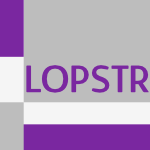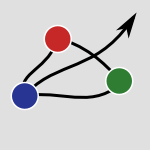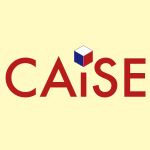309 papers:
 DAC-2015-LiuWLCWBQ #challenge #design #security
DAC-2015-LiuWLCWBQ #challenge #design #security- Cloning your mind: security challenges in cognitive system designs and their solutions (BL, CW, HL, YC, QW, MB, QQ), p. 5.
 CHI-2015-Al-AmeenWS #multi #random #towards
CHI-2015-Al-AmeenWS #multi #random #towards- Towards Making Random Passwords Memorable: Leveraging Users’ Cognitive Ability Through Multiple Cues (MNAA, MKW, SS), pp. 2315–2324.
 CHI-2015-LyuLZYMWSK
CHI-2015-LyuLZYMWSK- Measuring Photoplethysmogram-Based Stress-Induced Vascular Response Index to Assess Cognitive Load and Stress (YL, XL, JZ, CY, CM, TW, YS, KiK), pp. 857–866.
 CHI-2015-ZhangBK #bias #design #information management
CHI-2015-ZhangBK #bias #design #information management- Designing Information for Remediating Cognitive Biases in Decision-Making (YZ, RKEB, WAK), pp. 2211–2220.
 DUXU-DD-2015-Zhang #design #research #semantics
DUXU-DD-2015-Zhang #design #research #semantics- Research on the Correspondence Between Designer End Expressions of Product Semantics with the Cognition of User End (LZ), pp. 379–391.
 DUXU-IXD-2015-YangWP #empirical #research
DUXU-IXD-2015-YangWP #empirical #research- New Research Methods for Media and Cognition Experiment Course (YY, SW, LP), pp. 327–334.
 DUXU-UI-2015-WollnerLC #design #framework #modelling #process #user interface
DUXU-UI-2015-WollnerLC #design #framework #modelling #process #user interface- Integrating a Cognitive Modelling Framework into the Design Process of Touchscreen User Interfaces (PKAW, PML, PJC), pp. 473–484.
 HIMI-IKC-2015-ZhouI #adaptation #behaviour
HIMI-IKC-2015-ZhouI #adaptation #behaviour- Effect of Adaptive Caution on Driver’s Lane-Change Behavior under Cognitively Distracted Condition (HZ, MI), pp. 262–271.
 LCT-2015-LambropoulosMFK #design #experience #learning #ontology
LCT-2015-LambropoulosMFK #design #experience #learning #ontology- Ontological Design to Support Cognitive Plasticity for Creative Immersive Experience in Computer Aided Learning (NL, IM, HMF, IAK), pp. 261–270.
 LCT-2015-ValdezBGSZ #complexity #visualisation #what
LCT-2015-ValdezBGSZ #complexity #visualisation #what- What Do My Colleagues Know? Dealing with Cognitive Complexity in Organizations Through Visualizations (ACV, SB, CG, US, MZ), pp. 449–459.
 ICEIS-v1-2015-CarboneraA15a #approach #information management #knowledge-based #representation
ICEIS-v1-2015-CarboneraA15a #approach #information management #knowledge-based #representation- A Cognition-inspired Knowledge Representation Approach for Knowledge-based Interpretation Systems (JLC, MA), pp. 644–649.
 SIGIR-2015-ShovonNDVC #process #web
SIGIR-2015-ShovonNDVC #process #web- Cognitive Activity during Web Search (MHIS, NN, JTD, RV, BC), pp. 967–970.
 SAC-2015-PiMMG #analysis #health #ontology #security
SAC-2015-PiMMG #analysis #health #ontology #security- Ontology definition and cognitive analysis in ocupational health and security (OHS) environments (NSP, LM, JMM, ACBG), pp. 201–206.
 ICSE-v2-2015-JagemarD #challenge #mobile #ubiquitous
ICSE-v2-2015-JagemarD #challenge #mobile #ubiquitous- Cognitively Sustainable ICT with Ubiquitous Mobile Services — Challenges and Opportunities (MJ, GDC), pp. 531–540.
 ASPLOS-2015-Banavar
ASPLOS-2015-Banavar- Watson and the Era of Cognitive Computing (GB), p. 413.
 CHI-2014-ChanLH #interactive #online #social
CHI-2014-ChanLH #interactive #online #social- Social epistemic cognition in online interactions (RYYC, SL, DH), pp. 3289–3298.
 CHI-2014-SampathRI #crowdsourcing #design #performance
CHI-2014-SampathRI #crowdsourcing #design #performance- Cognitively inspired task design to improve user performance on crowdsourcing platforms (HAS, RR, BI), pp. 3665–3674.
 CHI-2014-ZhangH #comprehension #modelling #multi
CHI-2014-ZhangH #comprehension #modelling #multi- Understanding multitasking through parallelized strategy exploration and individualized cognitive modeling (YZ, AJH), pp. 3885–3894.
 DHM-2014-LiuTZSLSF #assessment #behaviour #framework #modelling #named #performance
DHM-2014-LiuTZSLSF #assessment #behaviour #framework #modelling #named #performance- COMPAss: A Space Cognitive Behavior Modeling and Performance Assessment Platform (YL, ZT, YZ, QS, JL, JS, FF), pp. 630–636.
 DUXU-DP-2014-KramerN #design
DUXU-DP-2014-KramerN #design- Designing with the User in Mind a Cognitive Category Based Design Methodology (JK, SN), pp. 152–163.
 DUXU-ELAS-2014-ChenDCY #comprehension #experience #user interface
DUXU-ELAS-2014-ChenDCY #comprehension #experience #user interface- Enhance User Experience Moving in Campus through Understanding Human Spatial Cognition (SMC, YSD, SFC, HCY), pp. 265–272.
 DUXU-ELAS-2014-FloraB #behaviour #energy #feedback #graph
DUXU-ELAS-2014-FloraB #behaviour #energy #feedback #graph- Energy Graph Feedback: Attention, Cognition and Behavior Intentions (JAF, BB), pp. 520–529.
 HCI-AIMT-2014-IscenGM #design #image #interactive
HCI-AIMT-2014-IscenGM #design #image #interactive- Body Image and Body Schema: Interaction Design for and through Embodied Cognition (OEI, DG, MM), pp. 556–566.
 HCI-AS-2014-WenDHDB #capacity #navigation #tool support
HCI-AS-2014-WenDHDB #capacity #navigation #tool support- Fighting Technology Dumb Down: Our Cognitive Capacity for Effortful AR Navigation Tools (JW, AD, WSH, AD, MB), pp. 525–536.
 HCI-TMT-2014-Zuanon #design #interactive #named #process
HCI-TMT-2014-Zuanon #design #interactive #named #process- Design-Neuroscience: Interactions between the Creative and Cognitive Processes of the Brain and Design (RZ), pp. 167–174.
 HIMI-DE-2014-Ainoya #towards
HIMI-DE-2014-Ainoya #towards- KADEN Project — Towards the Construction of Model for Sharing Cognition in Manufacturing - (TA), pp. 291–297.
 HIMI-DE-2014-LeeY14a #documentation
HIMI-DE-2014-LeeY14a #documentation- Types of Document Search Tasks and Users’ Cognitive Information Seeking Strategies (HEL, WCY), pp. 449–460.
 LCT-NLE-2014-PataB #distributed #ecosystem
LCT-NLE-2014-PataB #distributed #ecosystem- Promoting Distributed Cognition at MOOC Ecosystems (KP, EB), pp. 204–215.
 SCSM-2014-Biocca #behaviour
SCSM-2014-Biocca #behaviour- Connected to My Avatar: — Effects of Avatar Embodiments on User Cognitions, Behaviors, and Self Construal (FB), pp. 421–429.
 ICEIS-v2-2014-HomendaJP #parametricity #re-engineering
ICEIS-v2-2014-HomendaJP #parametricity #re-engineering- Granular Cognitive Map Reconstruction — Adjusting Granularity Parameters (WH, AJ, WP), pp. 175–184.
 CIKM-2014-OchiaiKT #case study
CIKM-2014-OchiaiKT #case study- Re-call and Re-cognition in Episode Re-retrieval: A User Study on News Re-finding a Fortnight Later (SO, MPK, KT), pp. 579–588.
 ICPR-2014-FrintropGC #approach
ICPR-2014-FrintropGC #approach- A Cognitive Approach for Object Discovery (SF, GMG, ABC), pp. 2329–2334.
 KEOD-2014-GavrilovaL #design #ontology #visual notation
KEOD-2014-GavrilovaL #design #ontology #visual notation- Cognitive Style Affecting Visual Ontology Design — KOMET Project Results (TAG, IAL), pp. 207–214.
 KR-2014-BhattST #analysis #architecture #design #experience #industrial #user interface
KR-2014-BhattST #analysis #architecture #design #experience #industrial #user interface- Computing Narratives of Cognitive User Experience for Building Design Analysis: KR for Industry Scale Computer-Aided Architecture Design (MB, CPLS, MT).
 SIGIR-2014-KatoYOT #query
SIGIR-2014-KatoYOT #query- Investigating users’ query formulations for cognitive search intents (MPK, TY, HO, KT), pp. 577–586.
 SIGIR-2014-WuKS #behaviour #online #using
SIGIR-2014-WuKS #behaviour #online #using- Using information scent and need for cognition to understand online search behavior (WCW, DK, AS), pp. 557–566.
 MoDELS-2014-GranadaVBM #development #domain-specific language #effectiveness #visual notation
MoDELS-2014-GranadaVBM #development #domain-specific language #effectiveness #visual notation- Enabling the Development of Cognitive Effective Visual DSLs (DG, JMV, VAB, EM), pp. 535–551.
 MoDELS-2014-GranadaVBM #development #domain-specific language #effectiveness #visual notation
MoDELS-2014-GranadaVBM #development #domain-specific language #effectiveness #visual notation- Enabling the Development of Cognitive Effective Visual DSLs (DG, JMV, VAB, EM), pp. 535–551.
 LOPSTR-2014-GallF #architecture #semantics
LOPSTR-2014-GallF #architecture #semantics- A Formal Semantics for the Cognitive Architecture ACT-R (DG, TWF), pp. 74–91.
 HT-2013-KangL #information management #network #social
HT-2013-KangL #information management #network #social- Structural and cognitive bottlenecks to information access in social networks (JHK, KL), pp. 51–59.
 CHI-2013-GrigoreanuM #agile
CHI-2013-GrigoreanuM #agile- Informal cognitive walkthroughs (ICW): paring down and pairing up for an agile world (VG, MM), pp. 3093–3096.
 CHI-2013-IchinoIHU #behaviour
CHI-2013-IchinoIHU #behaviour- Effects of the display angle in museums on user’s cognition, behavior, and subjective responses (JI, KI, AH, TU), pp. 2979–2988.
 DHM-HB-2013-WangTLCTL #architecture #behaviour #modelling
DHM-HB-2013-WangTLCTL #architecture #behaviour #modelling- Cognitive Behavior Modeling of Manual Rendezvous and Docking Based on the ACT-R Cognitive Architecture (CW, YT, YL, SC, ZT, JL), pp. 143–148.
 DHM-SET-2013-LiuZLSFG #behaviour #modelling #towards
DHM-SET-2013-LiuZLSFG #behaviour #modelling #towards- Towards Early Status Warning for Driver’s Fatigue Based on Cognitive Behavior Models (YL, YZ, JL, JS, FF, JG), pp. 55–60.
 DHM-SET-2013-LiuZX #behaviour #simulation
DHM-SET-2013-LiuZX #behaviour #simulation- Effects of Sleep Deprivation on Pilot’s Cognitive Behavior in Flight Simulation (ZQL, QXZ, FX), pp. 45–54.
 DHM-SET-2013-YangYF #safety #using
DHM-SET-2013-YangYF #safety #using- Predicating the Safety of Airport Approaches Using a Cognitive Pilot Model (CY, TY, SF), pp. 126–133.
 DUXU-CXC-2013-MartinsG #information management #process
DUXU-CXC-2013-MartinsG #information management #process- Information Accessibility in Museums with a Focus on Technology and Cognitive Process (LBM, FG), pp. 257–265.
 DUXU-CXC-2013-ThinG #behaviour #case study #experience #game studies #integration #interactive
DUXU-CXC-2013-ThinG #behaviour #case study #experience #game studies #integration #interactive- Game-Based Interactive Media in Behavioral Medicine: Creating Serious Affective-Cognitive-Environmental-Social Integration Experiences (AGT, MG), pp. 470–479.
 DUXU-WM-2013-FordK #approach #visual notation
DUXU-WM-2013-FordK #approach #visual notation- Graphical Displays in Eco-Feedback: A Cognitive Approach (RF, BK), pp. 486–495.
 HCI-AS-2013-MajimaMSS #learning
HCI-AS-2013-MajimaMSS #learning- A Proposal of the New System Model for Nursing Skill Learning Based on Cognition and Technique (YM, YM, MS, MS), pp. 134–143.
 HCI-IMT-2013-GreeneTM #challenge #gesture #mobile #modelling #multi
HCI-IMT-2013-GreeneTM #challenge #gesture #mobile #modelling #multi- Computational Cognitive Modeling of Touch and Gesture on Mobile Multitouch Devices: Applications and Challenges for Existing Theory (KKG, FPT, RJM), pp. 449–455.
 HCI-UC-2013-LinHW #learning #using #visual notation
HCI-UC-2013-LinHW #learning #using #visual notation- Establishing a Cognitive Map of Public Place for Blind and Visual Impaired by Using IVEO Hands-On Learning System (QWL, SLH, JLW), pp. 193–198.
 HIMI-D-2013-SusukiTOM #analysis #behaviour
HIMI-D-2013-SusukiTOM #analysis #behaviour- Cognitive Analysis of Driver’s Behavior with Seamless Display of Back-Monitor and Side-View Mirror (NS, KT, MO, HM), pp. 642–649.
 HIMI-HSM-2013-ItohKMYYO #behaviour #comparison
HIMI-HSM-2013-ItohKMYYO #behaviour #comparison- Comparison of Cognitively Impaired, Healthy Non-Professional and Healthy Professional Driver Behavior on a Small and Low-Fidelity Driving Simulator (MI, MK, KM, KY, SY, MO), pp. 490–496.
 HIMI-LCCB-2013-YajimaHY #analysis #communication #design
HIMI-LCCB-2013-YajimaHY #analysis #communication #design- Application of Ethno-Cognitive Interview and Analysis Method for the Smart Communication Design (AY, HH, TY), pp. 649–657.
 EDOC-2013-SelwayGMS #approach #formal method #natural language #specification #using
EDOC-2013-SelwayGMS #approach #formal method #natural language #specification #using- Formalising Natural Language Specifications Using a Cognitive Linguistics/Configuration Based Approach (MS, GG, WM, MS), pp. 59–68.
 ICEIS-v1-2013-DombiD #modelling #using
ICEIS-v1-2013-DombiD #modelling #using- Modelling Complex Systems using the Pliant Cognitive Map (JDD, JD), pp. 506–512.
 ICEIS-v3-2013-HsuK #case study
ICEIS-v3-2013-HsuK #case study- A Study of Cognitive Effort of Decision Makers with Different NC under Framing (CWH, ClK), pp. 75–82.
 ICEIS-v3-2013-Plechawska-WojcikLW #assessment #case study #experience #user interface #using #web
ICEIS-v3-2013-Plechawska-WojcikLW #assessment #case study #experience #user interface #using #web- Assessment of User Experience with Responsive Web Applications using Expert Method and Cognitive Walkthrough — A Case Study (MPW, SLM, LW), pp. 111–118.
 ECIR-2013-PeetzR #documentation
ECIR-2013-PeetzR #documentation- Cognitive Temporal Document Priors (MHP, MdR), pp. 318–330.
 KDIR-KMIS-2013-SaxenaBW #composition #learning
KDIR-KMIS-2013-SaxenaBW #composition #learning- A Cognitive Reference based Model for Learning Compositional Hierarchies with Whole-composite Tags (ABS, AB, AW), pp. 119–127.
 SIGIR-2013-ScholerKWLW #assessment
SIGIR-2013-ScholerKWLW #assessment- The effect of threshold priming and need for cognition on relevance calibration and assessment (FS, DK, WCW, HSL, WW), pp. 623–632.
 SIGIR-2013-Wu #behaviour #how #online #predict #using
SIGIR-2013-Wu #behaviour #how #online #predict #using- How far will you go?: characterizing and predicting online search stopping behavior using information scent and need for cognition (WCW), p. 1149.
 DAC-2012-SharadAPR #network
DAC-2012-SharadAPR #network- Cognitive computing with spin-based neural networks (MS, CA, GP, KR), pp. 1262–1263.
 ITiCSE-2012-AsadB #aspect-oriented #concept #image #learning
ITiCSE-2012-AsadB #aspect-oriented #concept #image #learning- Are children capable of learning image processing concepts?: cognitive and affective aspects (KA, MB), pp. 227–231.
 CHI-2012-BogartBDAW #case study #debugging #design #interactive #programming
CHI-2012-BogartBDAW #case study #debugging #design #interactive #programming- Designing a debugging interaction language for cognitive modelers: an initial case study in natural programming plus (CB, MMB, SD, HA, RW), pp. 2469–2478.
 CHI-2012-BoonsukGK #interface #video
CHI-2012-BoonsukGK #interface #video- The impact of three interfaces for 360-degree video on spatial cognition (WB, SBG, JWK), pp. 2579–2588.
 CHI-2012-BrehmerMTJ #testing
CHI-2012-BrehmerMTJ #testing- Investigating interruptions in the context of computerised cognitive testing for older adults (MB, JM, CT, CJ), pp. 2649–2658.
 CHI-2012-GaoM #game studies
CHI-2012-GaoM #game studies- The acute cognitive benefits of casual exergame play (YG, RLM), pp. 1863–1872.
 CHI-2012-OganWBRCLC #case study #collaboration #design #recommendation
CHI-2012-OganWBRCLC #case study #collaboration #design #recommendation- Collaboration in cognitive tutor use in latin America: field study and design recommendations (AO, EW, RSJdB, GRM, MJC, TL, AMJBdC), pp. 1381–1390.
 CSCW-2012-NobaranyHF #approach #collaboration #distributed #process #reuse
CSCW-2012-NobaranyHF #approach #collaboration #distributed #process #reuse- Facilitating the reuse process in distributed collaboration: a distributed cognition approach (SN, MH, BDF), pp. 1223–1232.
 ICPR-2012-SimoesSW #detection #image #using
ICPR-2012-SimoesSW #detection #image #using- Using local texture maps of brain MR images to detect Mild Cognitive Impairment (RS, CHS, AMvCvW), pp. 153–156.
 Onward-2012-HansenLG #architecture #programming
Onward-2012-HansenLG #architecture #programming- Cognitive architectures: a way forward for the psychology of programming (MEH, AL, RLG), pp. 27–38.
 SLE-2012-Storey #challenge #design #ontology #social #using
SLE-2012-Storey #challenge #design #ontology #social #using- Addressing Cognitive and Social Challenges in Designing and Using Ontologies in the Biomedical Domain (MADS), pp. 1–3.
 CASE-2011-StyliosG #fuzzy #modelling #using
CASE-2011-StyliosG #fuzzy #modelling #using- Modeling complex logistics systems using soft computing methodology of Fuzzy Cognitive Maps (CDS, GKG), pp. 72–77.
 HT-2011-ChoudhuryCC #identification #social #social media
HT-2011-ChoudhuryCC #identification #social #social media- Identifying relevant social media content: leveraging information diversity and user cognition (MDC, SC, MC), pp. 161–170.
 HT-2011-SahW #automation #fuzzy #metadata #mining #using
HT-2011-SahW #automation #fuzzy #metadata #mining #using- Automatic mining of cognitive metadata using fuzzy inference (MS, VW), pp. 37–46.
 ITiCSE-2011-HubwieserM #object-oriented #programming
ITiCSE-2011-HubwieserM #object-oriented #programming- Investigating cognitive structures of object oriented programming (PH, AM), p. 377.
 CHI-2011-BaumerT #analysis #distributed #process #video
CHI-2011-BaumerT #analysis #distributed #process #video- Comparing activity theory with distributed cognition for video analysis: beyond “kicking the tires” (EPSB, BT), pp. 133–142.
 CHI-2011-CoyleMDO #behaviour #game studies
CHI-2011-CoyleMDO #behaviour #game studies- Exploratory evaluations of a computer game supporting cognitive behavioural therapy for adolescents (DC, NM, GD, GO), pp. 2937–2946.
 CHI-2011-SoloveyLCWPSSFSGJ #adaptation #multi #user interface
CHI-2011-SoloveyLCWPSSFSGJ #adaptation #multi #user interface- Sensing cognitive multitasking for a brain-based adaptive user interface (ETS, FL, KC, DW, MP, MS, AS, SF, PWS, AG, RJKJ), pp. 383–392.
 CHI-2011-Vazquez-AlvarezB #interface #mobile #multi
CHI-2011-Vazquez-AlvarezB #interface #mobile #multi- Eyes-free multitasking: the effect of cognitive load on mobile spatial audio interfaces (YVA, SAB), pp. 2173–2176.
 CHI-2011-ZarinF #design #interactive
CHI-2011-ZarinF #design #interactive- Through the troll forest: exploring tabletop interaction design for children with special cognitive needs (RZ, DF), pp. 3319–3322.
 DHM-2011-BeckmannD #modelling
DHM-2011-BeckmannD #modelling- Incorporating Motion Data and Cognitive Models in IPS2 (MB, JD), pp. 379–386.
 DHM-2011-TangwenF #analysis #architecture #cumulative #learning #polymorphism
DHM-2011-TangwenF #analysis #architecture #cumulative #learning #polymorphism- Polymorphic Cumulative Learning in Integrated Cognitive Architectures for Analysis of Pilot-Aircraft Dynamic Environment (TY, SF), pp. 409–416.
 DUXU-v2-2011-WatanabeYHA #user interface #web
DUXU-v2-2011-WatanabeYHA #user interface #web- Study of User Interface for Browsing Web Contents That Considers the Cognitive Features of Older Users (MW, SY, RH, YA), pp. 60–67.
 HCD-2011-AlmAGEDVR #aspect-oriented
HCD-2011-AlmAGEDVR #aspect-oriented- Cognitive Prostheses: Findings from Attempts to Model Some Aspects of Cognition (NA, AA, GG, ME, RD, PV, PR), pp. 275–284.
 HCI-DDA-2011-AbdullahAN #design #development #framework #towards #user interface
HCI-DDA-2011-AbdullahAN #design #development #framework #towards #user interface- Towards a Cognitive-Based User Interface Design Framework Development (NA, WAWA, NLMN), pp. 17–24.
 HCI-DDA-2011-InoueAN #analysis #modelling
HCI-DDA-2011-InoueAN #analysis #modelling- Cognitive Analysis for Knowledge Modeling in Air Traffic Control Work (SI, HA, KN), pp. 341–350.
 HCI-ITE-2011-TakahashiK
HCI-ITE-2011-TakahashiK- Eye-Movement-Based Instantaneous Cognition Model for Non-verbal Smooth Closed Figures (YT, SK), pp. 314–322.
 HCI-UA-2011-HopeOHL #design #multi
HCI-UA-2011-HopeOHL #design #multi- Spatial Design, Designers and Users: Exploring the Meaning of Multi-party Service Cognition (TH, MO, YH, MHL), pp. 328–335.
 HCI-UA-2011-HsuC #approach #behaviour #navigation
HCI-UA-2011-HsuC #approach #behaviour #navigation- Associating Learners’ Cognitive Style with Their Navigation Behaviors: A Data-Mining Approach (YCH, SYC), pp. 27–34.
 HCI-UA-2011-Huseyinov #adaptation #fuzzy #learning #modelling #multi
HCI-UA-2011-Huseyinov #adaptation #fuzzy #learning #modelling #multi- Fuzzy Linguistic Modelling Cognitive / Learning Styles for Adaptation through Multi-level Granulation (IH), pp. 39–47.
 HCI-UA-2011-VellaVR #people
HCI-UA-2011-VellaVR #people- Investigating Drag and Drop Techniques for Older People with Cognitive Impairment (FV, NV, PR), pp. 530–538.
 HIMI-v1-2011-GarbharranT #modelling #social
HIMI-v1-2011-GarbharranT #modelling #social- Modelling Social Cognitive Theory to Explain Software Piracy Intention (AG, AT), pp. 301–310.
 IDGD-2011-LiLY #image #modelling
IDGD-2011-LiLY #image #modelling- Study of the Influence of Handset Modeling Characteristics on Image Cognition (BL, JlL, LY), pp. 177–184.
 CAiSE-2011-FiglL #complexity #modelling #process
CAiSE-2011-FiglL #complexity #modelling #process- Cognitive Complexity in Business Process Modeling (KF, RL), pp. 452–466.
 ICEIS-v1-2011-LiZS #network #predict
ICEIS-v1-2011-LiZS #network #predict- A New Network Traffic Prediction Model in Cognitive Networks (DL, RZ, XS), pp. 427–435.
 ICEIS-v4-2011-Jung #comprehension #game studies #video
ICEIS-v4-2011-Jung #comprehension #game studies #video- Understanding Media Violence from a Role-play Perspective — Effects of Various Types of Violent Video Games on Players’ Cognitive Aggression (YJ), pp. 261–266.
 KEOD-2011-PileggiFT #ecosystem #network #semantics
KEOD-2011-PileggiFT #ecosystem #network #semantics- Enabling Semantic Ecosystems among Heterogeneous Cognitive Networks (SFP, CFL, VT), pp. 487–492.
 SIGIR-2011-Du #behaviour #coordination #multi #web
SIGIR-2011-Du #behaviour #coordination #multi #web- Cognitive coordinating behaviors in multitasking web search (JTD), pp. 1117–1118.
 SAC-2011-LiuLTL #framework #game studies #interactive #learning
SAC-2011-LiuLTL #framework #game studies #interactive #learning- A cognition-based interactive game platform for learning Chinese characters (CLL, CYL, JLT, CLL), pp. 1181–1186.
 ICPC-2010-BouwersVLD #architecture #complexity
ICPC-2010-BouwersVLD #architecture #complexity- A Cognitive Model for Software Architecture Complexity (EB, JV, CL, AvD), pp. 152–155.
 CHI-2010-IqbalJH
CHI-2010-IqbalJH- Cars, calls, and cognition: investigating driving and divided attention (STI, YCJ, EH), pp. 1281–1290.
 ICML-2010-ZhuGJRHK #learning #modelling
ICML-2010-ZhuGJRHK #learning #modelling- Cognitive Models of Test-Item Effects in Human Category Learning (XZ, BRG, KSJ, TTR, JH, CK), pp. 1247–1254.
 ICPR-2010-LeECA #case study #classification
ICPR-2010-LeECA #case study #classification- A Study of Voice Source and Vocal Tract Filter Based Features in Cognitive Load Classification (PNL, JE, EHCC, EA), pp. 4516–4519.
 ICPR-2010-PutzeJS #multimodal #recognition
ICPR-2010-PutzeJS #multimodal #recognition- Multimodal Recognition of Cognitive Workload for Multitasking in the Car (FP, JPJ, TS), pp. 3748–3751.
 RE-2010-SawahMR #bibliography #elicitation #modelling #perspective #requirements #using
RE-2010-SawahMR #bibliography #elicitation #modelling #perspective #requirements #using- Using Cognitive Mapping to Elicit Modelling Requirements: An Overview (SES, AM, MR), pp. 357–363.
 SLE-2010-GenonHA #effectiveness
SLE-2010-GenonHA #effectiveness- Analysing the Cognitive Effectiveness of the BPMN 2.0 Visual Notation (NG, PH, DA), pp. 377–396.
 DocEng-2009-KohK #documentation
DocEng-2009-KohK #documentation- Deriving image-text document surrogates to optimize cognition (EK, AK), pp. 84–93.
 SIGMOD-2009-Chi #social #using #web
SIGMOD-2009-Chi #social #using #web- Augmented social cognition: using social web technology to enhance the ability of groups to remember, think, and reason (EHC), pp. 973–984.
 CSEET-2009-McMeekinKCC #taxonomy #using
CSEET-2009-McMeekinKCC #taxonomy #using- Evaluating Software Inspection Cognition Levels Using Bloom’s Taxonomy (DAM, BRvK, EC, DJAC), pp. 232–239.
 ITiCSE-2009-MaFRRW #modelling #using #visualisation
ITiCSE-2009-MaFRRW #modelling #using #visualisation- Improving the mental models held by novice programmers using cognitive conflict and jeliot visualisations (LM, JDF, MR, IR, MW), pp. 166–170.
 ICPC-2009-KellyB #maintenance
ICPC-2009-KellyB #maintenance- An in-vivo study of the cognitive levels employed by programmers during software maintenance (TK, JB), pp. 95–99.
 CHI-2009-AppertZ #tool support #using
CHI-2009-AppertZ #tool support #using- Using strokes as command shortcuts: cognitive benefits and toolkit support (CA, SZ), pp. 2289–2298.
 CHI-2009-BrumbySH #adaptation #constraints #how
CHI-2009-BrumbySH #adaptation #constraints #how- Focus on driving: how cognitive constraints shape the adaptation of strategy when dialing while driving (DPB, DDS, AH), pp. 1629–1638.
 CHI-2009-ChinFK #adaptation #information management #interactive
CHI-2009-ChinFK #adaptation #information management #interactive- Adaptive information search: age-dependent interactions between cognitive profiles and strategies (JC, WTF, TGK), pp. 1683–1692.
 CHI-2009-KimD #artificial reality #navigation
CHI-2009-KimD #artificial reality #navigation- Simulated augmented reality windshield display as a cognitive mapping aid for elder driver navigation (SK, AKD), pp. 133–142.
 CHI-2009-LoveJTH #assessment #learning #predict
CHI-2009-LoveJTH #assessment #learning #predict- Learning to predict information needs: context-aware display as a cognitive aid and an assessment tool (BCL, MJ, MTT, MH), pp. 1351–1360.
 DHM-2009-BaumannK #comprehension
DHM-2009-BaumannK #comprehension- A Comprehension Based Cognitive Model of Situation Awareness (MRKB, JFK), pp. 192–201.
 DHM-2009-Marshall #what
DHM-2009-Marshall #what- What the Eyes Reveal: Measuring the Cognitive Workload of Teams (SPM), pp. 265–274.
 DHM-2009-RobbinsCM #architecture #human-computer #modelling
DHM-2009-RobbinsCM #architecture #human-computer #modelling- Bridging the Gap between HCI and DHM: The Modeling of Spatial Awareness within a Cognitive Architecture (BR, DWC, AM), pp. 295–304.
 DHM-2009-ThorvaldHC #aspect-oriented #modelling
DHM-2009-ThorvaldHC #aspect-oriented #modelling- Incorporating Cognitive Aspects in Digital Human Modeling (PT, DH, KC), pp. 323–332.
 HCD-2009-AkatsuK #visual notation
HCD-2009-AkatsuK #visual notation- Auditory and Visual Guidance for Reducing Cognitive Load (HA, AK), pp. 391–397.
 HCD-2009-KremsB #process
HCD-2009-KremsB #process- Driving and Situation Awareness: A Cognitive Model of Memory-Update Processes (JFK, MRKB), pp. 986–994.
 HCD-2009-MayerOFNKKS #assembly #self
HCD-2009-MayerOFNKKS #assembly #self- Cognitive Engineering for Direct Human-Robot Cooperation in Self-optimizing Assembly Cells (MPM, BO, MF, JN, WK, BK, CMS), pp. 1003–1012.
 HCI-AUII-2009-DMelloCFG
HCI-AUII-2009-DMelloCFG- Responding to Learners’ Cognitive-Affective States with Supportive and Shakeup Dialogues (SKD, SDC, KF, ACG), pp. 595–604.
 HCI-AUII-2009-HayashiM #communication #interactive
HCI-AUII-2009-HayashiM #communication #interactive- Cognitive and Emotional Characteristics of Communication in Human-Human/Human-Agent Interaction (YH, KM), pp. 267–274.
 HCI-AUII-2009-LeeSW #architecture #user interface
HCI-AUII-2009-LeeSW #architecture #user interface- Context-Aware Cognitive Agent Architecture for Ambient User Interfaces (YL, CS, WW), pp. 456–463.
 HCI-NIMT-2009-Kwok
HCI-NIMT-2009-Kwok- Tactile Spatial Cognition by the Palm (MGK), pp. 479–485.
 HCI-NT-2009-JohnS #modelling #predict #towards #usability
HCI-NT-2009-JohnS #modelling #predict #towards #usability- Toward Cognitive Modeling for Predicting Usability (BEJ, SS), pp. 267–276.
 HIMI-DIE-2009-NobutaniN
HIMI-DIE-2009-NobutaniN- Control of Personal Tempo to Support Individual Action and Cognition (NN, YN), pp. 702–708.
 HIMI-II-2009-WallhoffBGRDR #exclamation #game studies #interface #statistics
HIMI-II-2009-WallhoffBGRDR #exclamation #game studies #interface #statistics- Statistics-Based Cognitive Human-Robot Interfaces for Board Games — Let’s Play! (FW, AB, JG, TR, MD, GR), pp. 708–715.
 IDGD-2009-GurleyN #bibliography
IDGD-2009-GurleyN #bibliography- A Systematic Review of Technologies Designed to Improve and Assist Cognitive Decline for Both the Current and Future Aging Populations (KG, AFN), pp. 156–163.
 ICEIS-AIDSS-2009-TadeusiewiczOO #automation #comprehension #information management
ICEIS-AIDSS-2009-TadeusiewiczOO #automation #comprehension #information management- Automatic Information Processing and Understanding in Cognitive Business Systems (RT, MRO, LO), pp. 5–10.
 CIKM-2009-PattanasriMM #comprehension #graph #named #random
CIKM-2009-PattanasriMM #comprehension #graph #named #random- ComprehEnRank: estimating comprehension in classroom by absorbing random walks on a cognitive graph (NP, MM, MM), pp. 1769–1772.
 KEOD-2009-CastroA
KEOD-2009-CastroA- Cognitive Object Format (HC, APA), pp. 351–358.
 KEOD-2009-SancinD #design #integration
KEOD-2009-SancinD #design #integration- Integration of Human Cognition into Plastic Products’ Design — A Decision Support System (US, BD), pp. 123–128.
 KMIS-2009-Bolisani #analysis #modelling #transaction
KMIS-2009-Bolisani #analysis #modelling #transaction- Modelling Cognitive Transactions for Economic and Accounting Analysis (EB), pp. 242–247.
 SEKE-2009-RodriguesSS #fuzzy
SEKE-2009-RodriguesSS #fuzzy- Improving Negotiations through Fuzzy Cognitive Maps (SAR, TSdS, JMdS), pp. 110–115.
 ECMDA-FA-2009-KoudriCAS #analysis #design #process
ECMDA-FA-2009-KoudriCAS #analysis #design #process- MoPCoM/MARTE Process Applied to a Cognitive Radio System Design and Analysis (AK, JC, DA, PS), pp. 277–288.
 OOPSLA-2009-Mullen #design #people
OOPSLA-2009-Mullen #design #people- Writing code for other people: cognitive psychology and the fundamentals of good software design principles (TM), pp. 481–492.
 ICLP-2009-Ji #approach #architecture #programming #research #set #summary
ICLP-2009-Ji #approach #architecture #programming #research #set #summary- A Cognitive Architecture for a Service Robot: An Answer Set Programming Approach (Research Summary) (JJ), pp. 532–533.
 ASE-2008-Eltaher #approach #testing #towards
ASE-2008-Eltaher #approach #testing #towards- Towards Good Enough Testing: A Cognitive-Oriented Approach Applied to Infotainment Systems (AE), pp. 525–528.
 ITiCSE-2008-MartinH #algorithm #design
ITiCSE-2008-MartinH #algorithm #design- Cognitive dimensions questionnaire applied to exploratory algorithm design (CJM, JMH), pp. 184–188.
 ICSM-2008-BoccuzzoG #visualisation
ICSM-2008-BoccuzzoG #visualisation- Software visualization with audio supported cognitive glyphs (SB, HG), pp. 366–375.
 CHI-2008-CarmienF #assessment #design #independence
CHI-2008-CarmienF #assessment #design #independence- Design, adoption, and assessment of a socio-technical environment supporting independence for persons with cognitive disabilities (SC, GF), pp. 597–606.
 CHI-2008-WuBRBM #distributed #memory management #product line
CHI-2008-WuBRBM #distributed #memory management #product line- Collaborating to remember: a distributed cognition account of families coping with memory impairments (MW, JPB, BR, RB, MM), pp. 825–834.
 CAiSE-2008-OverbeekBP #information management
CAiSE-2008-OverbeekBP #information management- Information Systems Engineering Supported by Cognitive Matchmaking (SJO, PvB, HAP), pp. 495–509.
 ICEIS-HCI-2008-FlochCP #interactive #modelling #process
ICEIS-HCI-2008-FlochCP #interactive #modelling #process- Cognitive Modeling of Interactions During a Negotiation Process (CF, NC, AP), pp. 221–226.
 ICEIS-HCI-2008-MuranoEH #effectiveness #feedback #user interface
ICEIS-HCI-2008-MuranoEH #effectiveness #feedback #user interface- Effectiveness and Preferences of Anthropomorphic User Interface Feedback in a PC Building Context and Cognitive Load (PM, CE, POH), pp. 181–188.
 ICEIS-ISAS2-2008-Venable #analysis #problem #requirements
ICEIS-ISAS2-2008-Venable #analysis #problem #requirements- Improving Requirements Analysis — Rigourous Problem Analysis and Formulation with Coloured Cognitive Maps (JRV), pp. 466–470.
 SLE-2008-MoodyH #analysis #diagrams #effectiveness #syntax #uml #visual notation
SLE-2008-MoodyH #analysis #diagrams #effectiveness #syntax #uml #visual notation- Evaluating the Visual Syntax of UML: An Analysis of the Cognitive Effectiveness of the UMLFamily of Diagrams (DLM, JvH), pp. 16–34.
 ICPC-2007-Vivanco #algorithm #complexity #identification #metric #modelling #predict #search-based #source code
ICPC-2007-Vivanco #algorithm #complexity #identification #metric #modelling #predict #search-based #source code- Use of a Genetic Algorithm to Identify Source Code Metrics Which Improves Cognitive Complexity Predictive Models (RAV), pp. 297–300.
 WCRE-2007-BuccuzzoG #named #visualisation
WCRE-2007-BuccuzzoG #named #visualisation- CocoViz: Supported Cognitive Software Visualization (SB, HG), pp. 273–274.
 AGTIVE-2007-MatznerMS #automation #graph #performance
AGTIVE-2007-MatznerMS #automation #graph #performance- Efficient Graph Matching with Application to Cognitive Automation (AM, MM, AS), pp. 297–312.
 CHI-2007-BrumbyHS #constraints #trade-off
CHI-2007-BrumbyHS #constraints #trade-off- A cognitive constraint model of dual-task trade-offs in a highly dynamic driving task (DPB, AH, DDS), pp. 233–242.
 DHM-2007-CarruthTRM #modelling
DHM-2007-CarruthTRM #modelling- Integrating Perception, Cognition and Action for Digital Human Modeling (DWC, MDT, BR, AM), pp. 333–342.
 DHM-2007-Feyen #interactive #modelling
DHM-2007-Feyen #interactive #modelling- Bridging the Gap: Exploring Interactions Between Digital Human Models and Cognitive Models (RF), pp. 382–391.
 DHM-2007-JiangSZLL #analysis
DHM-2007-JiangSZLL #analysis- Shape Analysis of Human Brain with Cognitive Disorders (TJ, FS, WZ, SL, XL), pp. 409–414.
 HCI-AS-2007-LeeS #estimation #process
HCI-AS-2007-LeeS #estimation #process- Experimental Effect Estimation of an Integrated Decision Support System to Aid Operator’s Cognitive Activities for Nuclear Power Plants (SJL, PHS), pp. 620–628.
 HCI-AS-2007-NguyenS #communication #semantics
HCI-AS-2007-NguyenS #communication #semantics- ICT-Mediated Synchronous Communication in Creative Teamwork: From Cognitive Dust to Semantics (VN, PAS), pp. 692–701.
 HCI-AS-2007-ZamzuriW
HCI-AS-2007-ZamzuriW- The Role of Cognitive Styles in Groupware Acceptance (NZ, WW), pp. 835–845.
 HCI-IDU-2007-AkatsuMH #design
HCI-IDU-2007-AkatsuMH #design- Design Principles Based on Cognitive Aging (HA, HM, NH), pp. 3–10.
 HCI-IDU-2007-Kirlik #concept #modelling
HCI-IDU-2007-Kirlik #concept #modelling- Conceptual and Technical Issues in Extending Computational Cognitive Modeling to Aviation (AK), pp. 872–881.
 HCI-IDU-2007-LiangJZW #design #modelling #process
HCI-IDU-2007-LiangJZW #design #modelling #process- A Meta-cognition Modeling of Engineering Product Designer in the Process of Product Design (JL, ZJ, YSZ, JW), pp. 146–155.
 HCI-IDU-2007-YinC #analysis #automation #metric #speech #towards
HCI-IDU-2007-YinC #analysis #automation #metric #speech #towards- Towards Automatic Cognitive Load Measurement from Speech Analysis (BY, FC), pp. 1011–1020.
 HCI-MIE-2007-BaranDC #approach #eye tracking #how #problem
HCI-MIE-2007-BaranDC #approach #eye tracking #how #problem- How Do Adults Solve Digital Tangram Problems? Analyzing Cognitive Strategies Through Eye Tracking Approach (BB, BD, KÇ), pp. 555–563.
 HIMI-IIE-2007-IchikawaN #navigation
HIMI-IIE-2007-IchikawaN #navigation- Driver Support System: Spatial Cognitive Ability and Its Application to Human Navigation (KI, YN), pp. 1013–1019.
 HIMI-MTT-2007-KimYKYK #approach #interactive
HIMI-MTT-2007-KimYKYK #approach #interactive- A Cognitive Approach to Enhancing Human-Robot Interaction for Service Robots (YCK, WCY, HTK, YSY, HJK), pp. 858–867.
 OCSC-2007-ChiPL #aspect-oriented #information management #social
OCSC-2007-ChiPL #aspect-oriented #information management #social- Aspects of Augmented Social Cognition: Social Information Foraging and Social Search (EHhC, PP, SKL), pp. 60–69.
 VISSOFT-2007-BoccuzzoG #named #towards #visualisation
VISSOFT-2007-BoccuzzoG #named #towards #visualisation- CocoViz: Towards Cognitive Software Visualizations (SB, HCG), pp. 72–79.
 SIGIR-2007-ShahKF #algorithm #case study #feedback
SIGIR-2007-ShahKF #algorithm #case study #feedback- Making mind and machine meet: a study of combining cognitive and algorithmic relevance feedback (CS, DK, XF), pp. 877–878.
 CASE-2006-HuSHL #modelling #probability #using
CASE-2006-HuSHL #modelling #probability #using- Vision-based Indoor Scene Cognition Using a Spatial Probabilistic Modeling Method (JSH, TMS, HCH, PCL), pp. 620–625.
 HT-2006-WangR #authoring #comprehension #framework #hypermedia #social
HT-2006-WangR #authoring #comprehension #framework #hypermedia #social- A cognitive and social framework for shared understanding in cooperative hypermedia authoring (WW, JR), pp. 53–56.
 ICPC-2006-ClearyE #eclipse #plugin
ICPC-2006-ClearyE #eclipse #plugin- The Cognitive Assignment Eclipse Plug-in (BC, CE), pp. 241–244.
 ICSM-2006-FisherCZ #comprehension #difference #using
ICSM-2006-FisherCZ #comprehension #difference #using- Using Sex Differences to Link Spatial Cognition and Program Comprehension (MF, AC, LZ), pp. 289–298.
 CHI-2006-Dawe #how #product line
CHI-2006-Dawe #how #product line- Desperately seeking simplicity: how young adults with cognitive disabilities and their families adopt assistive technologies (MD), pp. 1143–1152.
 CAiSE-2006-Sutcliffe #concept #design #modelling #named #trust
CAiSE-2006-Sutcliffe #concept #design #modelling #named #trust- Trust: From Cognition to Conceptual Models and Design (AGS), pp. 3–17.
 SEKE-2006-GarlanS #architecture
SEKE-2006-GarlanS #architecture- An Architecture for Personal Cognitive Assistance (DG, BRS), pp. 91–97.
 DAC-2005-KrenikB #network
DAC-2005-KrenikB #network- Cognitive radio techniques for wide area networks (WK, AB), pp. 409–412.
 CHI-2005-TollingerLMTVHP #constraints #development #modelling #multi #performance
CHI-2005-TollingerLMTVHP #constraints #development #modelling #multi #performance- Supporting efficient development of cognitive models at multiple skill levels: exploring recent advances in constraint-based modeling (IT, RLL, MM, PT, AHV, AH, LP), pp. 411–420.
 ICEIS-v2-2005-Yousfi-MonodP #information management #modelling
ICEIS-v2-2005-Yousfi-MonodP #information management #modelling- Knowledge Acquisition Modeling through Dialogue between Cognitive Agents (MYM, VP), pp. 201–206.
 RE-2005-PottF #modelling #requirements #using
RE-2005-PottF #modelling #requirements #using- Using Cognitive Modeling for Requirements Engineering in Anesthesiology (CP, JlF), pp. 491–492.
 CSMR-2004-Torchiano #approach #comprehension #empirical #modelling
CSMR-2004-Torchiano #approach #comprehension #empirical #modelling- Empirical Investigation of a Non-Intrusive Approach to Study Comprehension Cognitive Models (MT), pp. 184–194.
 WCRE-2004-MurrayL #comprehension #summary
WCRE-2004-MurrayL #comprehension #summary- A Brief Summary of Cognitive Patterns for Program Comprehension (AM, TCL), pp. 304–305.
 CHI-2004-BakerCKW #behaviour #game studies #student
CHI-2004-BakerCKW #behaviour #game studies #student- Off-task behavior in the cognitive tutor classroom: when students “game the system” (RSB, ATC, KRK, AZW), pp. 383–390.
 CHI-2004-VeraHML #approach #constraints #interactive #predict
CHI-2004-VeraHML #approach #constraints #interactive #predict- A constraint satisfaction approach to predicting skilled interactive cognition (AHV, AH, MM, RLL), pp. 121–128.
 ICEIS-v2-2004-OgielaTO #algorithm #information management #reasoning #visual notation
ICEIS-v2-2004-OgielaTO #algorithm #information management #reasoning #visual notation- Cognitive Reasoning in Intelligent Medical Information Systems — Visual Data Perception Algorithms in Medical Decision support Systems (MRO, RT, LO), pp. 222–225.
 ICEIS-v5-2004-ChangT #design
ICEIS-v5-2004-ChangT #design- The Meeting of Gestalt and Cognitive Load Theories in Instructional Screen Design (DC, JT), pp. 53–62.
 ICML-2004-RudarySP #adaptation #constraints #learning #reasoning
ICML-2004-RudarySP #adaptation #constraints #learning #reasoning- Adaptive cognitive orthotics: combining reinforcement learning and constraint-based temporal reasoning (MRR, SPS, MEP).
 ICPR-v1-2004-WredeBSPV #framework #integration #scalability
ICPR-v1-2004-WredeBSPV #framework #integration #scalability- Integration Frameworks for Large Scale Cognitive Vision Systems — An Evaluative Study (SW, CB, GS, WP, MV), pp. 761–764.
 ICPR-v1-2004-WredeFBS #architecture #framework #xml
ICPR-v1-2004-WredeFBS #architecture #framework #xml- An XML Based Framework for Cognitive Vision Architectures (SW, JF, CB, GS), pp. 757–760.
 ICPR-v2-2004-HanheideBS #consistency #memory management #validation
ICPR-v2-2004-HanheideBS #consistency #memory management #validation- Memory Consistency Validation in a Cognitive Vision System (MH, CB, GS), pp. 459–462.
 CSEET-2003-GermainR #process #question #student #what
CSEET-2003-GermainR #process #question #student #what- What Cognitive Activities Are Performed in Student Projects? (ÉG, PNR), p. 224–?.
 ITiCSE-2003-Hazzan #aspect-oriented #framework #re-engineering #social
ITiCSE-2003-Hazzan #aspect-oriented #framework #re-engineering #social- Cognitive and social aspects of software engineering: a course framework (OH), pp. 3–6.
 ITiCSE-2003-RedmondWP
ITiCSE-2003-RedmondWP- Equilibriating instructional media for cognitive styles (JAR, CW, AP), pp. 55–59.
 IWPC-2003-RillingK #complexity #comprehension #identification #metric #slicing #using
IWPC-2003-RillingK #complexity #comprehension #identification #metric #slicing #using- Identifying Comprehension Bottlenecks Using Program Slicing and Cognitive Complexity Metric (JR, TK), pp. 115–124.
 IWPC-2003-Walenstein #evaluation #towards
IWPC-2003-Walenstein #evaluation #towards- Observing and Measuring Cognitive Support: Steps Toward Systematic Tool Evaluation and Engineering (AW), pp. 185–195.
 CHI-2003-BlackmonKP #problem #usability #web
CHI-2003-BlackmonKP #problem #usability #web- Repairing usability problems identified by the cognitive walkthrough for the web (MHB, MK, PGP), pp. 497–504.
 CHI-2003-HornofH #eye tracking
CHI-2003-HornofH #eye tracking- Cognitive strategies and eye movements for searching hierarchical computer displays (AJH, TH), pp. 249–256.
 CHI-2003-SalvucciL #architecture #modelling
CHI-2003-SalvucciL #architecture #modelling- Simple cognitive modeling in a complex cognitive architecture (DDS, FJL), pp. 265–272.
 SOFTVIS-2003-Tudoreanu #design #effectiveness #tool support #visualisation
SOFTVIS-2003-Tudoreanu #design #effectiveness #tool support #visualisation- Designing Effective Program Visualization Tools for Reducing User’s Cognitive Effort (MET), pp. 105–114.
 SAC-2003-LanzenbergerMOP #behaviour #visualisation
SAC-2003-LanzenbergerMOP #behaviour #visualisation- Applying Information Visualization Techniques to Capture and Explore the Course of Cognitive Behavioral Therapy (ML, SM, SO, CP), pp. 268–274.
 ITiCSE-2002-ParkinsonR #learning #performance #question
ITiCSE-2002-ParkinsonR #learning #performance #question- Do cognitive styles affect learning performance in different computer media? (AP, JAR), pp. 39–43.
 IWPC-2002-Walenstein #analysis #comprehension #tool support
IWPC-2002-Walenstein #analysis #comprehension #tool support- Theory-based Analysis of Cognitive Support in Software Comprehension Tools (AW), pp. 75–84.
 CHI-2002-BlackmonPKL #web
CHI-2002-BlackmonPKL #web- Cognitive walkthrough for the web (MHB, PGP, MK, CHL), pp. 463–470.
 CHI-2002-SharlinIWKSL #assessment #user interface
CHI-2002-SharlinIWKSL #assessment #user interface- Cognitive cubes: a tangible user interface for cognitive assessment (ES, YI, BW, YK, SS, LL), pp. 347–354.
 SEKE-2002-KhazaeiT #usability
SEKE-2002-KhazaeiT #usability- Applying cognitive dimensions to evaluate and improve the usability of Z formalism (BK, ET), pp. 571–577.
 RE-2002-Carroll #design
RE-2002-Carroll #design- Scenarios and Design Cognition (JMC), pp. 3–5.
 HT-2001-ManciniS #hypermedia
HT-2001-ManciniS #hypermedia- Cognitive coherence relations and hypertext: from cinematic patterns to scholarly discourse (CM, SBS), pp. 165–174.
 ICDAR-2001-TeredesaiG #approach #classification #optimisation
ICDAR-2001-TeredesaiG #approach #classification #optimisation- Active Digit Classifiers: A Separability Optimization Approach to Emulate Cognition (AT, VG), pp. 401–405.
 ITiCSE-2001-MendesMC #approach #education #flexibility #hypermedia
ITiCSE-2001-MendesMC #approach #education #flexibility #hypermedia- The cognitive flexibility theory0: an approach for teaching Hypermedia Engineering (EM, NM, SC), pp. 21–24.
 IWPC-2001-ZayourL #reverse engineering #tool support
IWPC-2001-ZayourL #reverse engineering #tool support- Adoption of Reverse Engineering Tools: A Cognitive Perspective and Methodology (IZ, TCL), pp. 245–255.
 CHI-2001-KierasMB #execution #modelling #towards
CHI-2001-KierasMB #execution #modelling #towards- Towards demystification of direct manipulation: cognitive modeling charts the gulf of execution (DEK, DM, JAB), pp. 128–135.
 CHI-2001-Salvucci #architecture #interface #predict #using
CHI-2001-Salvucci #architecture #interface #predict #using- Predicting the effects of in-car interfaces on driver bahavior using a cognitive architecture (DDS), pp. 120–127.
 CHI-2000-Spencer #constraints #development #social
CHI-2000-Spencer #constraints #development #social- The streamlined cognitive walkthrough method, working around social constraints encountered in a software development company (RS), pp. 353–359.
 ICML-2000-SannerALL #learning #performance
ICML-2000-SannerALL #learning #performance- Achieving Efficient and Cognitively Plausible Learning in Backgammon (SS, JRA, CL, MCL), pp. 823–830.
 ICPR-v1-2000-Dori #image #retrieval
ICPR-v1-2000-Dori #image #retrieval- Cognitive Image Retrieval (DD), pp. 1042–1045.
 ICPR-v3-2000-LiK #ambiguity #analysis #detection
ICPR-v3-2000-LiK #ambiguity #analysis #detection- Detection of Cognitive Binding During Ambiguous Figure Tasks by Wavelet Coherence Analysis of EEG Signals (THL, WRK), pp. 3098–3101.
 KDD-2000-CrapoWWW #modelling #perspective #process #visualisation
KDD-2000-CrapoWWW #modelling #perspective #process #visualisation- Visualization and the process of modeling: a cognitive-theoretic view (AWC, LBW, WAW, TRW), pp. 218–226.
 ITiCSE-1999-Holmboe #framework #object-oriented
ITiCSE-1999-Holmboe #framework #object-oriented- A cognitive framework for knowledge in informatics: the case of object-orientation (CH), pp. 17–20.
 CHI-1999-HornofK #how #modelling #people
CHI-1999-HornofK #how #modelling #people- Cognitive Modeling Demonstrates How People Use Anticipated Location Knowledge of Menu Items (AJH, DEK), pp. 410–417.
 HCI-CCAD-1999-BambaNF #agile #design
HCI-CCAD-1999-BambaNF #agile #design- Human cognitive model for organizational design suited to task in agile manufacturing (EB, KN, TF), pp. 1231–1235.
 HCI-CCAD-1999-HollnagelN #approach #collaboration #performance
HCI-CCAD-1999-HollnagelN #approach #collaboration #performance- The collaboration between operators and procedures: a cognitive systems engineering approach to performance improvement (EH, YN), pp. 1211–1215.
 HCI-CCAD-1999-OzawaAFSY #adaptation #case study #education #implementation #process #realtime
HCI-CCAD-1999-OzawaAFSY #adaptation #case study #education #implementation #process #realtime- An experimental study on implementing real-time estimator of human cognitive process into eye-sensing head mounted display for realizing adaptive CAI for teaching plant diagnosis knowledge (TO, YA, SF, HS, HY), pp. 1197–1200.
 HCI-CCAD-1999-PatelKR #learning
HCI-CCAD-1999-PatelKR #learning- Cognitive apprenticeship based learning environment in numeric domains (AP, K, DR), pp. 637–641.
 HCI-CCAD-1999-RizzoBNCRLKKTH #bibliography #process
HCI-CCAD-1999-RizzoBNCRLKKTH #bibliography #process- Virtual environments for targeting cognitive processes: an overview of projects at the University of Southern California (AAR, JGB, UN, CC, AvR, PL, KK, CK, MT, LH), pp. 1095–1099.
 HCI-CCAD-1999-TsuchiyaHMH #estimation
HCI-CCAD-1999-TsuchiyaHMH #estimation- Estimation of plant operator’s cognitive modes based on the cognition model (KT, YH, HM, EH), pp. 1306–1310.
 HCI-EI-1999-ChengYH #design #distributed #human-computer #interface #learning
HCI-EI-1999-ChengYH #design #distributed #human-computer #interface #learning- Cognition and Learning in Distributed Design Environments: Experimental Studies and Human-Computer Interfaces (FC, YHY, HH), pp. 631–635.
 HCI-EI-1999-Goppold
HCI-EI-1999-Goppold- Spatio-Temporal Perspectives: A new way for cognitive enhancement (AG), pp. 476–480.
 HCI-EI-1999-HertzumJ
HCI-EI-1999-HertzumJ- The Evaluator Effect during First-Time Use of the Cognitive Walkthrough Technique (MH, NEJ), pp. 1063–1067.
 HCI-EI-1999-JorgensenGLJ
HCI-EI-1999-JorgensenGLJ- Mental Workload in IT Work: Combining Cognitive and Physiological Perspectives (AHJ, AHG, BL, BRJ), pp. 97–101.
 HCI-EI-1999-KandaN #classification #visual notation
HCI-EI-1999-KandaN #classification #visual notation- Studies on Classification of Similar Trademarks Corresponding to Human Visual Cognitive Sense (TK, HN), pp. 501–505.
 HCI-EI-1999-MahanMEHD #induction
HCI-EI-1999-MahanMEHD #induction- Countermeasures Against Stress: Dynamic Cognitive Induction (RPM, CJM, LRE, EH, PTD), pp. 691–695.
 HCI-EI-1999-Sokolov #biology #education #feedback
HCI-EI-1999-Sokolov #biology #education #feedback- Computer Assisted Education with Cognitive and Biological Feedback Loops (ES), pp. 834–837.
 HCI-EI-1999-WallachP #architecture #human-computer
HCI-EI-1999-WallachP #architecture #human-computer- Cognitive Architectures — A Theoretical Foundation for HCI (DW, MP), pp. 491–495.
 SEKE-1999-WieserHS #experience
SEKE-1999-WieserHS #experience- Push of Pull: Two Cognitive Modes of Systematic Experience Transfer at DaimlerChrysler (EW, FH, KS), pp. 186–204.
 ICALP-1998-Valiant #architecture
ICALP-1998-Valiant #architecture- A Neuroidal Architecture for Cognitive Computation (LGV), pp. 642–669.
 CHI-1998-Boy #analysis #automation #safety
CHI-1998-Boy #analysis #automation #safety- Cognitive Function Analysis for Human-Centered Automation of Safety-Critical Systems (GAB), pp. 265–272.
 ACIR-1998-Gabrielli #design #evaluation #multi #social
ACIR-1998-Gabrielli #design #evaluation #multi #social- Social and Cognitive Factors in the Design and Evaluation of Multimedia Systems (SG).
 SIGIR-1998-SaitoO #user satisfaction #web
SIGIR-1998-SaitoO #user satisfaction #web- A Cognitive Model for Searching for Ill-Defined Targets on the Web: The Relationship Between Search Strategies and User Satisfaction (MS, KO), pp. 155–163.
 ICSE-1998-RobillarddDV #process #re-engineering
ICSE-1998-RobillarddDV #process #re-engineering- Measuring Cognitive Activities in Software Engineering (PNR, Pd, FD, WV), pp. 292–300.
 WPC-1997-StoreyFM #design #visualisation
WPC-1997-StoreyFM #design #visualisation- Cognitive Design Elements to Support the Construction of a Mental Model during Software Visualization (MADS, FDF, HAM), pp. 17–28.
 ICSM-2000-IioFA #analysis #maintenance #process
ICSM-2000-IioFA #analysis #maintenance #process- Experimental Analysis of the Cognitive Processes of Program Maintainers during Software Maintenance (KI, TF, YA), pp. 242–249.
 CHI-1997-HornofK #modelling #random
CHI-1997-HornofK #modelling #random- Cognitive Modeling Reveals Menu Search is Both Random and Systematic (AJH, DEK), pp. 107–114.
 CHI-1997-Ramsay #analysis
CHI-1997-Ramsay #analysis- A Factor Analysis of User Cognition and Emotion (JR), pp. 546–547.
 CHI-1997-SumnerBK #design #knowledge-based
CHI-1997-SumnerBK #design #knowledge-based- The Cognitive Ergonomics of Knowledge-Based Design Support Systems (TS, NB, BHK), pp. 83–90.
 HCI-CC-1997-DobronetsSV #identification
HCI-CC-1997-DobronetsSV #identification- Ergodynamic Method of Identification of the Cognitive Strategy Used by the Human-Operator (BSD, AAS, VFV), pp. 837–840.
 HCI-CC-1997-Pejtersen #approach #communication #information retrieval #network #semantics
HCI-CC-1997-Pejtersen #approach #communication #information retrieval #network #semantics- A Cognitive Engineering Approach to Cross Disciplinary Exploration of Work Domains and Semantic Information Retrieval in Communication Networks (AMP), pp. 69–72.
 HCI-CC-1997-PerusichM #fuzzy #problem #using
HCI-CC-1997-PerusichM #fuzzy #problem #using- Using Fuzzy Cognitive Maps to Define the Search Space in Problem Solving (KP, MDM), pp. 805–808.
 HCI-CC-1997-WestlanderBH #development #information management #interactive #process
HCI-CC-1997-WestlanderBH #development #information management #interactive #process- Modes of Interaction Between Businesses and R&D Project Teams in Cognitive Engineering and Information Systems Development. Success and Failures in the Process of Field Studies (GW, TB, SH), pp. 793–796.
 HCI-SEC-1997-Borron #programming
HCI-SEC-1997-Borron #programming- A New Form of Programming in the Light of Cognitive Dimensions (HJB), pp. 315–318.
 HCI-SEC-1997-Hollnagel #question
HCI-SEC-1997-Hollnagel #question- Building Joint Cognitive Systems: A Case of Horses for Courses? (EH), pp. 39–42.
 HCI-SEC-1997-HolstCG #analysis #constraints #interface
HCI-SEC-1997-HolstCG #analysis #constraints #interface- Transporting Honey Bears: A Cognitive Analysis of the Effects of Interface Manipulation Style on a Constraint-Based Planning Task (SJH, EFC, DJG), pp. 169–172.
 HCI-SEC-1997-Okamoto #information management #interface #people #theory and practice #towards
HCI-SEC-1997-Okamoto #information management #interface #people #theory and practice #towards- Toward Rehabilitation Cognitive Engineering-Gap Between Theory and Practice in the Human Interface of Information Processing Devices for People with Disabilities (AO), pp. 551–554.
 HCI-SEC-1997-PedraliB #analysis #process #question
HCI-SEC-1997-PedraliB #analysis #process #question- Can We Trace Back Cognitive Processes in Root Cause Analysis? (MP, RB), pp. 59–62.
 HCI-SEC-1997-RayHG #adaptation #design #interface
HCI-SEC-1997-RayHG #adaptation #design #interface- Mapping Physiology to Cognition in Adaptive Interface Design (WJR, SH, JG), pp. 491–494.
 HCI-SEC-1997-Schar #hypermedia #navigation
HCI-SEC-1997-Schar #hypermedia #navigation- The “History” as a Cognitive Tool for Navigation in a Hypertext System (SGS), pp. 743–746.
 HCI-SEC-1997-Stary97a #interactive #modelling #question #specification
HCI-SEC-1997-Stary97a #interactive #modelling #question #specification- The Role of Interaction Modeling in Future Cognitive Ergonomics: Do Interaction Models Lead to Formal Specification of Involved Machine Intelligence? (CS), pp. 91–94.
 HCI-SEC-1997-TakahashiTK #multimodal
HCI-SEC-1997-TakahashiTK #multimodal- Multimodal Display for Enhanced Situation Awareness Based on Cognitive Diversity (MT, ST, MK), pp. 707–710.
 HCI-SEC-1997-Taylor97a #requirements
HCI-SEC-1997-Taylor97a #requirements- Human Electronic Crew Teamwork: Cognitive Requirements for Compatibility and Control with Dynamic Function Allocation (RMT), pp. 247–250.
 HCI-SEC-1997-Umemuro #difference #effectiveness
HCI-SEC-1997-Umemuro #difference #effectiveness- Age Differences Between Elderly and Young Workers in Effectiveness of Computer Skill Training and Task Cognition (HU), pp. 177–180.
 CSCW-1996-HalversonR #design #distributed #implementation #social #tutorial
CSCW-1996-HalversonR #design #distributed #implementation #social #tutorial- An Introduction to Distributed Cognition: Analyzing the Organizational, the Social and the Cognitive for Designing and Implementing CSCW Applications (Tutorial) (CH, YR), p. 4.
 CAiSE-1996-SiauWB #bias #modelling
CAiSE-1996-SiauWB #bias #modelling- When Parents Need Not Have Children — Cognitive Biases in Information Modeling (KS, YW, IB), pp. 402–420.
 ICPR-1996-Alexandre #invariant #pattern matching #pattern recognition #recognition
ICPR-1996-Alexandre #invariant #pattern matching #pattern recognition #recognition- Connectionist cognitive processing for invariant pattern recognition (FA), pp. 679–683.
 CHI-1995-JohnP #approach #case study #learning #using
CHI-1995-JohnP #approach #case study #learning #using- Learning and Using the Cognitive Walkthrough Method: A Case Study Approach (BEJ, HP), pp. 429–436.
 SEKE-1995-YoonG #debugging #framework
SEKE-1995-YoonG #debugging #framework- A Cognitive Framework of Debugging (BdY, ONG), pp. 304–311.
 CHI-1994-RiemanLYP94a #architecture #consistency #interface #reasoning #why
CHI-1994-RiemanLYP94a #architecture #consistency #interface #reasoning #why- Why is a raven like a writing desk?: lessons in interface consistency and analogical reasoning from two cognitive architectures (JR, CHL, RMY, PGP), pp. 438–444.
 SIGIR-1994-Ingwersen #information retrieval #interactive #semantics
SIGIR-1994-Ingwersen #information retrieval #interactive #semantics- Polyrepresentation of Information Needs and Semantic Entities: Elements of a Cognitive Theory for Information Retrieval Interaction (PI), pp. 101–110.
 WCRE-1993-BertelsVB #approach #comprehension
WCRE-1993-BertelsVB #approach #comprehension- A Cognitive Approach to Program Understanding (KB, PV, CDB), pp. 1–7.
 HCI-ACS-1993-KanSH #evaluation #towards #type system
HCI-ACS-1993-KanSH #evaluation #towards #type system- Toward a Cognitive Ergonomics Evaluation System of Typing Chinese Characters into Computers (ZK, GS, ZH), pp. 380–385.
 HCI-ACS-1993-LomanBR #human-computer #interface
HCI-ACS-1993-LomanBR #human-computer #interface- Cognitive Model of Human-Computer Interface (HCI) Onboard Space Station Freedom (SSF) (JML, DJB, CR), pp. 201–206.
 HCI-ACS-1993-Moray #modelling
HCI-ACS-1993-Moray #modelling- Formalisms for Cognitive Modeling (NM), pp. 581–586.
 HCI-ACS-1993-VekkerAY #complexity #on the
HCI-ACS-1993-VekkerAY #complexity #on the- On Psychophysiology of Cognitive Complexity (LV, JAA, YY), pp. 605–610.
 HCI-ACS-1993-YufikS #complexity #framework #human-computer #interface
HCI-ACS-1993-YufikS #complexity #framework #human-computer #interface- A Framework for Measuring Cognitive Complexity of the Human-Machine Interface (YMY, TBS), pp. 587–592.
 HCI-SHI-1993-BenyshK #implementation #simulation
HCI-SHI-1993-BenyshK #implementation #simulation- The Implementation of Knowledge Structures in Cognitive Simulation Environments (DVB, RJK), pp. 309–314.
 HCI-SHI-1993-FurutaK #process #simulation
HCI-SHI-1993-FurutaK #process #simulation- Computer Simulation Model of Cognitive Process in Group Works (KF, SK), pp. 979–984.
 HCI-SHI-1993-PayneWC #comprehension #hypermedia #synthesis
HCI-SHI-1993-PayneWC #comprehension #hypermedia #synthesis- Cognitive Processing and Hypermedia Comprehension: A Preliminary Synthesis (DGP, MJW, MSC), pp. 633–638.
 HCI-SHI-1993-TamuraCS #image #speech
HCI-SHI-1993-TamuraCS #image #speech- Effect of Image Presentation to the Cognition of Plural Speech (HT, YC, YS), pp. 62–67.
 HCI-SHI-1993-YoungM #approach #assessment #learning #problem
HCI-SHI-1993-YoungM #approach #assessment #learning #problem- A Situated Cognition Approach to Problem Solving with Implications for Computer-Based Learning and Assessment (MFY, MDM), pp. 825–830.
 INTERCHI-1993-Eisenstadt #research
INTERCHI-1993-Eisenstadt #research- Human cognition research laboratory: the Open University (U.K.) (ME), pp. 51–52.
 TOOLS-EUROPE-1993-Boy #perspective
TOOLS-EUROPE-1993-Boy #perspective- Cognitive Science and Objects; the Agent Perspective (GAB), p. 295.
 TOOLS-EUROPE-1993-Boy93a #perspective
TOOLS-EUROPE-1993-Boy93a #perspective- Associated Paper: Cognitive Science and Objects: the Agent Perspective (GAB), pp. 297–318.
 HT-ECHT-1992-JonesS #flexibility #hypermedia
HT-ECHT-1992-JonesS #flexibility #hypermedia- Imagined Conversations: The Relevance of Hypertext, Pragmatism, and Cognitive Flexibility Theory to the Interpretation of “Classic Texts” in Intellectual History (RAJ, RS), pp. 141–148.
 HT-ECHT-1992-Osterbye #hypermedia #problem #version control
HT-ECHT-1992-Osterbye #hypermedia #problem #version control- Structural and Cognitive Problems in Providing Version Control for Hypertext (KØ), pp. 33–42.
 HT-ECHT-1992-Rouet #question
HT-ECHT-1992-Rouet #question- Cognitive Processing of Hyperdocuments: When Does Nonlinearity Help? (JFR), pp. 131–140.
 CHI-1992-KimL #composition #design #functional #logic #object-oriented #process #towards
CHI-1992-KimL #composition #design #functional #logic #object-oriented #process #towards- Towards a model of cognitive process in logical design: comparing object-oriented and traditional functional decomposition software methodologies (JK, FJL), pp. 489–498.
 CHI-1992-RowleyR #evaluation #user interface
CHI-1992-RowleyR #evaluation #user interface- The cognitive jogthrough: a fast-paced user interface evaluation procedure (DER, DGR), pp. 389–395.
 CHI-1992-WhartonBJF #case study #experience #recommendation #user interface
CHI-1992-WhartonBJF #case study #experience #recommendation #user interface- Applying cognitive walkthroughs to more complex user interfaces: experiences, issues, and recommendations (CW, JB, RJ, MF), pp. 381–388.
 SIGIR-1992-Allen #difference
SIGIR-1992-Allen #difference- Cognitive Differences in End User Searching of a CD-ROM Index (BA), pp. 298–309.
 HT-1991-Wright
HT-1991-Wright- Cognitive Overheads and Prostheses: Some Issues in Evaluating Hypertexts (PW), pp. 1–12.
 CHI-1991-Lohse #comprehension #graph
CHI-1991-Lohse #comprehension #graph- A cognitive model for the perception and understanding of graphs (JL), pp. 137–144.
 CHI-1991-RiemanDHEPL #automation
CHI-1991-RiemanDHEPL #automation- An automated cognitive walkthrough (JR, SD, DCH, ME, PGP, CHL), pp. 427–428.
 ML-1991-Shultz #development #modelling #simulation
ML-1991-Shultz #development #modelling #simulation- Simulating Stages of Human Cognitive Development With Connectionist Models (TRS), pp. 105–109.
 ICSE-1991-FischerHR #reuse #tool support
ICSE-1991-FischerHR #reuse #tool support- Cognitive tools for locating and comprehending software objects for reuse (GF, SH, DFR), pp. 318–328.
 HT-1989-BairdEKSS #aspect-oriented #design #hypermedia
HT-1989-BairdEKSS #aspect-oriented #design #hypermedia- Cognitive Aspects of Designing Hypertext Systems (PB, DEE, WK, JS, NAS), p. 397.
 CHI-1989-FischerD
CHI-1989-FischerD- University of Colorado at Boulder, Institute of cognitive science (GF, SD), pp. 49–50.
 CHI-1989-HoppeKST #user interface
CHI-1989-HoppeKST #user interface- Cognitive user interface laboratory, GMD-IPSI (HUH, RTK, FS, AT), pp. 307–308.
 CHI-1989-Olson
CHI-1989-Olson- Cognitive science and machine intelligence laboratory, University of Michigan (GMO), pp. 151–152.
 SIGIR-1989-Pejtersen #analysis #information retrieval #interface #library
SIGIR-1989-Pejtersen #analysis #information retrieval #interface #library- A Library System for Information Retrieval Based on a Cognitive Task Analysis and Supported by an Icon-Based Interface (AMP), pp. 40–47.
 SIGIR-1988-Case #comprehension #how #retrieval #scalability
SIGIR-1988-Case #comprehension #how #retrieval #scalability- How Do the Experts Do It? The Use of Ethnographic Methods as an Aid to Understanding the Cognitive Processing and Retrieval of Large Bodies of Text (DOC), pp. 127–133.
 HT-1987-SmithWF #hypermedia
HT-1987-SmithWF #hypermedia- A Hypertext Writing Environment and its Cognitive Basis (JBS, SFW, GJF), pp. 195–214.
 HCI-CE-1987-Gopher #approach #design
HCI-CE-1987-Gopher #approach #design- Cognition at Your Fingertips: A Cognitive Approach to the Design of Data Entry Devices (DG), pp. 233–240.
 HCI-SES-1987-Bikson
HCI-SES-1987-Bikson- Cognitive Press in Computer-Mediated Work (TKB), pp. 353–364.
 HCI-SES-1987-GansterHT #development
HCI-SES-1987-GansterHT #development- Development of a Scale to Assess Occupational Cognitive Demands (DCG, JJHJ, LTT), pp. 231–238.
 HCI-SES-1987-SmithS #feedback #interface
HCI-SES-1987-SmithS #feedback #interface- Motor Feedback Control of Human Cognition: Implication for the Cognitive Interface (TJS, KUS), pp. 239–254.
 CSCW-1986-CrowstonML #case study #design
CSCW-1986-CrowstonML #case study #design- Cognitive science and organizational design: a case study of computer conferencing (KC, TWM, FL), pp. 43–61.
 ICSE-1984-Curtis #difference #re-engineering
ICSE-1984-Curtis #difference #re-engineering- Fifteen Years of Psychology in Software Engineering: Individual Differences and Cognitive Science (BC), pp. 97–107.
 DAC-2015-LiuWLCWBQ #challenge #design #security
DAC-2015-LiuWLCWBQ #challenge #design #security CHI-2015-Al-AmeenWS #multi #random #towards
CHI-2015-Al-AmeenWS #multi #random #towards CHI-2015-LyuLZYMWSK
CHI-2015-LyuLZYMWSK CHI-2015-ZhangBK #bias #design #information management
CHI-2015-ZhangBK #bias #design #information management DUXU-DD-2015-Zhang #design #research #semantics
DUXU-DD-2015-Zhang #design #research #semantics DUXU-IXD-2015-YangWP #empirical #research
DUXU-IXD-2015-YangWP #empirical #research DUXU-UI-2015-WollnerLC #design #framework #modelling #process #user interface
DUXU-UI-2015-WollnerLC #design #framework #modelling #process #user interface HIMI-IKC-2015-ZhouI #adaptation #behaviour
HIMI-IKC-2015-ZhouI #adaptation #behaviour LCT-2015-LambropoulosMFK #design #experience #learning #ontology
LCT-2015-LambropoulosMFK #design #experience #learning #ontology LCT-2015-ValdezBGSZ #complexity #visualisation #what
LCT-2015-ValdezBGSZ #complexity #visualisation #what ICEIS-v1-2015-CarboneraA15a #approach #information management #knowledge-based #representation
ICEIS-v1-2015-CarboneraA15a #approach #information management #knowledge-based #representation SIGIR-2015-ShovonNDVC #process #web
SIGIR-2015-ShovonNDVC #process #web SAC-2015-PiMMG #analysis #health #ontology #security
SAC-2015-PiMMG #analysis #health #ontology #security ICSE-v2-2015-JagemarD #challenge #mobile #ubiquitous
ICSE-v2-2015-JagemarD #challenge #mobile #ubiquitous ASPLOS-2015-Banavar
ASPLOS-2015-Banavar CHI-2014-ChanLH #interactive #online #social
CHI-2014-ChanLH #interactive #online #social CHI-2014-SampathRI #crowdsourcing #design #performance
CHI-2014-SampathRI #crowdsourcing #design #performance CHI-2014-ZhangH #comprehension #modelling #multi
CHI-2014-ZhangH #comprehension #modelling #multi DHM-2014-LiuTZSLSF #assessment #behaviour #framework #modelling #named #performance
DHM-2014-LiuTZSLSF #assessment #behaviour #framework #modelling #named #performance DUXU-DP-2014-KramerN #design
DUXU-DP-2014-KramerN #design DUXU-ELAS-2014-ChenDCY #comprehension #experience #user interface
DUXU-ELAS-2014-ChenDCY #comprehension #experience #user interface DUXU-ELAS-2014-FloraB #behaviour #energy #feedback #graph
DUXU-ELAS-2014-FloraB #behaviour #energy #feedback #graph HCI-AIMT-2014-IscenGM #design #image #interactive
HCI-AIMT-2014-IscenGM #design #image #interactive HCI-AS-2014-WenDHDB #capacity #navigation #tool support
HCI-AS-2014-WenDHDB #capacity #navigation #tool support HCI-TMT-2014-Zuanon #design #interactive #named #process
HCI-TMT-2014-Zuanon #design #interactive #named #process HIMI-DE-2014-Ainoya #towards
HIMI-DE-2014-Ainoya #towards HIMI-DE-2014-LeeY14a #documentation
HIMI-DE-2014-LeeY14a #documentation LCT-NLE-2014-PataB #distributed #ecosystem
LCT-NLE-2014-PataB #distributed #ecosystem SCSM-2014-Biocca #behaviour
SCSM-2014-Biocca #behaviour ICEIS-v2-2014-HomendaJP #parametricity #re-engineering
ICEIS-v2-2014-HomendaJP #parametricity #re-engineering CIKM-2014-OchiaiKT #case study
CIKM-2014-OchiaiKT #case study ICPR-2014-FrintropGC #approach
ICPR-2014-FrintropGC #approach KEOD-2014-GavrilovaL #design #ontology #visual notation
KEOD-2014-GavrilovaL #design #ontology #visual notation KR-2014-BhattST #analysis #architecture #design #experience #industrial #user interface
KR-2014-BhattST #analysis #architecture #design #experience #industrial #user interface SIGIR-2014-KatoYOT #query
SIGIR-2014-KatoYOT #query SIGIR-2014-WuKS #behaviour #online #using
SIGIR-2014-WuKS #behaviour #online #using MoDELS-2014-GranadaVBM #development #domain-specific language #effectiveness #visual notation
MoDELS-2014-GranadaVBM #development #domain-specific language #effectiveness #visual notation MoDELS-2014-GranadaVBM #development #domain-specific language #effectiveness #visual notation
MoDELS-2014-GranadaVBM #development #domain-specific language #effectiveness #visual notation LOPSTR-2014-GallF #architecture #semantics
LOPSTR-2014-GallF #architecture #semantics HT-2013-KangL #information management #network #social
HT-2013-KangL #information management #network #social CHI-2013-GrigoreanuM #agile
CHI-2013-GrigoreanuM #agile CHI-2013-IchinoIHU #behaviour
CHI-2013-IchinoIHU #behaviour DHM-HB-2013-WangTLCTL #architecture #behaviour #modelling
DHM-HB-2013-WangTLCTL #architecture #behaviour #modelling DHM-SET-2013-LiuZLSFG #behaviour #modelling #towards
DHM-SET-2013-LiuZLSFG #behaviour #modelling #towards DHM-SET-2013-LiuZX #behaviour #simulation
DHM-SET-2013-LiuZX #behaviour #simulation DHM-SET-2013-YangYF #safety #using
DHM-SET-2013-YangYF #safety #using DUXU-CXC-2013-MartinsG #information management #process
DUXU-CXC-2013-MartinsG #information management #process DUXU-CXC-2013-ThinG #behaviour #case study #experience #game studies #integration #interactive
DUXU-CXC-2013-ThinG #behaviour #case study #experience #game studies #integration #interactive DUXU-WM-2013-FordK #approach #visual notation
DUXU-WM-2013-FordK #approach #visual notation HCI-AS-2013-MajimaMSS #learning
HCI-AS-2013-MajimaMSS #learning HCI-IMT-2013-GreeneTM #challenge #gesture #mobile #modelling #multi
HCI-IMT-2013-GreeneTM #challenge #gesture #mobile #modelling #multi HCI-UC-2013-LinHW #learning #using #visual notation
HCI-UC-2013-LinHW #learning #using #visual notation HIMI-D-2013-SusukiTOM #analysis #behaviour
HIMI-D-2013-SusukiTOM #analysis #behaviour HIMI-HSM-2013-ItohKMYYO #behaviour #comparison
HIMI-HSM-2013-ItohKMYYO #behaviour #comparison HIMI-LCCB-2013-YajimaHY #analysis #communication #design
HIMI-LCCB-2013-YajimaHY #analysis #communication #design EDOC-2013-SelwayGMS #approach #formal method #natural language #specification #using
EDOC-2013-SelwayGMS #approach #formal method #natural language #specification #using ICEIS-v1-2013-DombiD #modelling #using
ICEIS-v1-2013-DombiD #modelling #using ICEIS-v3-2013-HsuK #case study
ICEIS-v3-2013-HsuK #case study ICEIS-v3-2013-Plechawska-WojcikLW #assessment #case study #experience #user interface #using #web
ICEIS-v3-2013-Plechawska-WojcikLW #assessment #case study #experience #user interface #using #web ECIR-2013-PeetzR #documentation
ECIR-2013-PeetzR #documentation KDIR-KMIS-2013-SaxenaBW #composition #learning
KDIR-KMIS-2013-SaxenaBW #composition #learning SIGIR-2013-ScholerKWLW #assessment
SIGIR-2013-ScholerKWLW #assessment SIGIR-2013-Wu #behaviour #how #online #predict #using
SIGIR-2013-Wu #behaviour #how #online #predict #using DAC-2012-SharadAPR #network
DAC-2012-SharadAPR #network ITiCSE-2012-AsadB #aspect-oriented #concept #image #learning
ITiCSE-2012-AsadB #aspect-oriented #concept #image #learning CHI-2012-BogartBDAW #case study #debugging #design #interactive #programming
CHI-2012-BogartBDAW #case study #debugging #design #interactive #programming CHI-2012-BoonsukGK #interface #video
CHI-2012-BoonsukGK #interface #video CHI-2012-BrehmerMTJ #testing
CHI-2012-BrehmerMTJ #testing CHI-2012-GaoM #game studies
CHI-2012-GaoM #game studies CHI-2012-OganWBRCLC #case study #collaboration #design #recommendation
CHI-2012-OganWBRCLC #case study #collaboration #design #recommendation CSCW-2012-NobaranyHF #approach #collaboration #distributed #process #reuse
CSCW-2012-NobaranyHF #approach #collaboration #distributed #process #reuse ICPR-2012-SimoesSW #detection #image #using
ICPR-2012-SimoesSW #detection #image #using Onward-2012-HansenLG #architecture #programming
Onward-2012-HansenLG #architecture #programming SLE-2012-Storey #challenge #design #ontology #social #using
SLE-2012-Storey #challenge #design #ontology #social #using CASE-2011-StyliosG #fuzzy #modelling #using
CASE-2011-StyliosG #fuzzy #modelling #using HT-2011-ChoudhuryCC #identification #social #social media
HT-2011-ChoudhuryCC #identification #social #social media HT-2011-SahW #automation #fuzzy #metadata #mining #using
HT-2011-SahW #automation #fuzzy #metadata #mining #using ITiCSE-2011-HubwieserM #object-oriented #programming
ITiCSE-2011-HubwieserM #object-oriented #programming CHI-2011-BaumerT #analysis #distributed #process #video
CHI-2011-BaumerT #analysis #distributed #process #video CHI-2011-CoyleMDO #behaviour #game studies
CHI-2011-CoyleMDO #behaviour #game studies CHI-2011-SoloveyLCWPSSFSGJ #adaptation #multi #user interface
CHI-2011-SoloveyLCWPSSFSGJ #adaptation #multi #user interface CHI-2011-Vazquez-AlvarezB #interface #mobile #multi
CHI-2011-Vazquez-AlvarezB #interface #mobile #multi CHI-2011-ZarinF #design #interactive
CHI-2011-ZarinF #design #interactive DHM-2011-BeckmannD #modelling
DHM-2011-BeckmannD #modelling DHM-2011-TangwenF #analysis #architecture #cumulative #learning #polymorphism
DHM-2011-TangwenF #analysis #architecture #cumulative #learning #polymorphism DUXU-v2-2011-WatanabeYHA #user interface #web
DUXU-v2-2011-WatanabeYHA #user interface #web HCD-2011-AlmAGEDVR #aspect-oriented
HCD-2011-AlmAGEDVR #aspect-oriented HCI-DDA-2011-AbdullahAN #design #development #framework #towards #user interface
HCI-DDA-2011-AbdullahAN #design #development #framework #towards #user interface HCI-DDA-2011-InoueAN #analysis #modelling
HCI-DDA-2011-InoueAN #analysis #modelling HCI-ITE-2011-TakahashiK
HCI-ITE-2011-TakahashiK HCI-UA-2011-HopeOHL #design #multi
HCI-UA-2011-HopeOHL #design #multi HCI-UA-2011-HsuC #approach #behaviour #navigation
HCI-UA-2011-HsuC #approach #behaviour #navigation HCI-UA-2011-Huseyinov #adaptation #fuzzy #learning #modelling #multi
HCI-UA-2011-Huseyinov #adaptation #fuzzy #learning #modelling #multi HCI-UA-2011-VellaVR #people
HCI-UA-2011-VellaVR #people HIMI-v1-2011-GarbharranT #modelling #social
HIMI-v1-2011-GarbharranT #modelling #social IDGD-2011-LiLY #image #modelling
IDGD-2011-LiLY #image #modelling CAiSE-2011-FiglL #complexity #modelling #process
CAiSE-2011-FiglL #complexity #modelling #process ICEIS-v1-2011-LiZS #network #predict
ICEIS-v1-2011-LiZS #network #predict ICEIS-v4-2011-Jung #comprehension #game studies #video
ICEIS-v4-2011-Jung #comprehension #game studies #video KEOD-2011-PileggiFT #ecosystem #network #semantics
KEOD-2011-PileggiFT #ecosystem #network #semantics SIGIR-2011-Du #behaviour #coordination #multi #web
SIGIR-2011-Du #behaviour #coordination #multi #web SAC-2011-LiuLTL #framework #game studies #interactive #learning
SAC-2011-LiuLTL #framework #game studies #interactive #learning ICPC-2010-BouwersVLD #architecture #complexity
ICPC-2010-BouwersVLD #architecture #complexity CHI-2010-IqbalJH
CHI-2010-IqbalJH ICML-2010-ZhuGJRHK #learning #modelling
ICML-2010-ZhuGJRHK #learning #modelling ICPR-2010-LeECA #case study #classification
ICPR-2010-LeECA #case study #classification ICPR-2010-PutzeJS #multimodal #recognition
ICPR-2010-PutzeJS #multimodal #recognition RE-2010-SawahMR #bibliography #elicitation #modelling #perspective #requirements #using
RE-2010-SawahMR #bibliography #elicitation #modelling #perspective #requirements #using SLE-2010-GenonHA #effectiveness
SLE-2010-GenonHA #effectiveness DocEng-2009-KohK #documentation
DocEng-2009-KohK #documentation SIGMOD-2009-Chi #social #using #web
SIGMOD-2009-Chi #social #using #web CSEET-2009-McMeekinKCC #taxonomy #using
CSEET-2009-McMeekinKCC #taxonomy #using ITiCSE-2009-MaFRRW #modelling #using #visualisation
ITiCSE-2009-MaFRRW #modelling #using #visualisation ICPC-2009-KellyB #maintenance
ICPC-2009-KellyB #maintenance CHI-2009-AppertZ #tool support #using
CHI-2009-AppertZ #tool support #using CHI-2009-BrumbySH #adaptation #constraints #how
CHI-2009-BrumbySH #adaptation #constraints #how CHI-2009-ChinFK #adaptation #information management #interactive
CHI-2009-ChinFK #adaptation #information management #interactive CHI-2009-KimD #artificial reality #navigation
CHI-2009-KimD #artificial reality #navigation CHI-2009-LoveJTH #assessment #learning #predict
CHI-2009-LoveJTH #assessment #learning #predict DHM-2009-BaumannK #comprehension
DHM-2009-BaumannK #comprehension DHM-2009-Marshall #what
DHM-2009-Marshall #what DHM-2009-RobbinsCM #architecture #human-computer #modelling
DHM-2009-RobbinsCM #architecture #human-computer #modelling DHM-2009-ThorvaldHC #aspect-oriented #modelling
DHM-2009-ThorvaldHC #aspect-oriented #modelling HCD-2009-AkatsuK #visual notation
HCD-2009-AkatsuK #visual notation HCD-2009-KremsB #process
HCD-2009-KremsB #process HCD-2009-MayerOFNKKS #assembly #self
HCD-2009-MayerOFNKKS #assembly #self HCI-AUII-2009-DMelloCFG
HCI-AUII-2009-DMelloCFG HCI-AUII-2009-HayashiM #communication #interactive
HCI-AUII-2009-HayashiM #communication #interactive HCI-AUII-2009-LeeSW #architecture #user interface
HCI-AUII-2009-LeeSW #architecture #user interface HCI-NIMT-2009-Kwok
HCI-NIMT-2009-Kwok HCI-NT-2009-JohnS #modelling #predict #towards #usability
HCI-NT-2009-JohnS #modelling #predict #towards #usability HIMI-DIE-2009-NobutaniN
HIMI-DIE-2009-NobutaniN HIMI-II-2009-WallhoffBGRDR #exclamation #game studies #interface #statistics
HIMI-II-2009-WallhoffBGRDR #exclamation #game studies #interface #statistics IDGD-2009-GurleyN #bibliography
IDGD-2009-GurleyN #bibliography ICEIS-AIDSS-2009-TadeusiewiczOO #automation #comprehension #information management
ICEIS-AIDSS-2009-TadeusiewiczOO #automation #comprehension #information management CIKM-2009-PattanasriMM #comprehension #graph #named #random
CIKM-2009-PattanasriMM #comprehension #graph #named #random KEOD-2009-CastroA
KEOD-2009-CastroA KEOD-2009-SancinD #design #integration
KEOD-2009-SancinD #design #integration KMIS-2009-Bolisani #analysis #modelling #transaction
KMIS-2009-Bolisani #analysis #modelling #transaction SEKE-2009-RodriguesSS #fuzzy
SEKE-2009-RodriguesSS #fuzzy ECMDA-FA-2009-KoudriCAS #analysis #design #process
ECMDA-FA-2009-KoudriCAS #analysis #design #process OOPSLA-2009-Mullen #design #people
OOPSLA-2009-Mullen #design #people ICLP-2009-Ji #approach #architecture #programming #research #set #summary
ICLP-2009-Ji #approach #architecture #programming #research #set #summary ASE-2008-Eltaher #approach #testing #towards
ASE-2008-Eltaher #approach #testing #towards ITiCSE-2008-MartinH #algorithm #design
ITiCSE-2008-MartinH #algorithm #design ICSM-2008-BoccuzzoG #visualisation
ICSM-2008-BoccuzzoG #visualisation CHI-2008-CarmienF #assessment #design #independence
CHI-2008-CarmienF #assessment #design #independence CHI-2008-WuBRBM #distributed #memory management #product line
CHI-2008-WuBRBM #distributed #memory management #product line CAiSE-2008-OverbeekBP #information management
CAiSE-2008-OverbeekBP #information management ICEIS-HCI-2008-FlochCP #interactive #modelling #process
ICEIS-HCI-2008-FlochCP #interactive #modelling #process ICEIS-HCI-2008-MuranoEH #effectiveness #feedback #user interface
ICEIS-HCI-2008-MuranoEH #effectiveness #feedback #user interface ICEIS-ISAS2-2008-Venable #analysis #problem #requirements
ICEIS-ISAS2-2008-Venable #analysis #problem #requirements SLE-2008-MoodyH #analysis #diagrams #effectiveness #syntax #uml #visual notation
SLE-2008-MoodyH #analysis #diagrams #effectiveness #syntax #uml #visual notation ICPC-2007-Vivanco #algorithm #complexity #identification #metric #modelling #predict #search-based #source code
ICPC-2007-Vivanco #algorithm #complexity #identification #metric #modelling #predict #search-based #source code WCRE-2007-BuccuzzoG #named #visualisation
WCRE-2007-BuccuzzoG #named #visualisation AGTIVE-2007-MatznerMS #automation #graph #performance
AGTIVE-2007-MatznerMS #automation #graph #performance CHI-2007-BrumbyHS #constraints #trade-off
CHI-2007-BrumbyHS #constraints #trade-off DHM-2007-CarruthTRM #modelling
DHM-2007-CarruthTRM #modelling DHM-2007-Feyen #interactive #modelling
DHM-2007-Feyen #interactive #modelling DHM-2007-JiangSZLL #analysis
DHM-2007-JiangSZLL #analysis HCI-AS-2007-LeeS #estimation #process
HCI-AS-2007-LeeS #estimation #process HCI-AS-2007-NguyenS #communication #semantics
HCI-AS-2007-NguyenS #communication #semantics HCI-AS-2007-ZamzuriW
HCI-AS-2007-ZamzuriW HCI-IDU-2007-AkatsuMH #design
HCI-IDU-2007-AkatsuMH #design HCI-IDU-2007-Kirlik #concept #modelling
HCI-IDU-2007-Kirlik #concept #modelling HCI-IDU-2007-LiangJZW #design #modelling #process
HCI-IDU-2007-LiangJZW #design #modelling #process HCI-IDU-2007-YinC #analysis #automation #metric #speech #towards
HCI-IDU-2007-YinC #analysis #automation #metric #speech #towards HCI-MIE-2007-BaranDC #approach #eye tracking #how #problem
HCI-MIE-2007-BaranDC #approach #eye tracking #how #problem HIMI-IIE-2007-IchikawaN #navigation
HIMI-IIE-2007-IchikawaN #navigation HIMI-MTT-2007-KimYKYK #approach #interactive
HIMI-MTT-2007-KimYKYK #approach #interactive OCSC-2007-ChiPL #aspect-oriented #information management #social
OCSC-2007-ChiPL #aspect-oriented #information management #social VISSOFT-2007-BoccuzzoG #named #towards #visualisation
VISSOFT-2007-BoccuzzoG #named #towards #visualisation SIGIR-2007-ShahKF #algorithm #case study #feedback
SIGIR-2007-ShahKF #algorithm #case study #feedback CASE-2006-HuSHL #modelling #probability #using
CASE-2006-HuSHL #modelling #probability #using HT-2006-WangR #authoring #comprehension #framework #hypermedia #social
HT-2006-WangR #authoring #comprehension #framework #hypermedia #social ICPC-2006-ClearyE #eclipse #plugin
ICPC-2006-ClearyE #eclipse #plugin ICSM-2006-FisherCZ #comprehension #difference #using
ICSM-2006-FisherCZ #comprehension #difference #using CHI-2006-Dawe #how #product line
CHI-2006-Dawe #how #product line CAiSE-2006-Sutcliffe #concept #design #modelling #named #trust
CAiSE-2006-Sutcliffe #concept #design #modelling #named #trust SEKE-2006-GarlanS #architecture
SEKE-2006-GarlanS #architecture DAC-2005-KrenikB #network
DAC-2005-KrenikB #network CHI-2005-TollingerLMTVHP #constraints #development #modelling #multi #performance
CHI-2005-TollingerLMTVHP #constraints #development #modelling #multi #performance ICEIS-v2-2005-Yousfi-MonodP #information management #modelling
ICEIS-v2-2005-Yousfi-MonodP #information management #modelling RE-2005-PottF #modelling #requirements #using
RE-2005-PottF #modelling #requirements #using CSMR-2004-Torchiano #approach #comprehension #empirical #modelling
CSMR-2004-Torchiano #approach #comprehension #empirical #modelling WCRE-2004-MurrayL #comprehension #summary
WCRE-2004-MurrayL #comprehension #summary CHI-2004-BakerCKW #behaviour #game studies #student
CHI-2004-BakerCKW #behaviour #game studies #student CHI-2004-VeraHML #approach #constraints #interactive #predict
CHI-2004-VeraHML #approach #constraints #interactive #predict ICEIS-v2-2004-OgielaTO #algorithm #information management #reasoning #visual notation
ICEIS-v2-2004-OgielaTO #algorithm #information management #reasoning #visual notation ICEIS-v5-2004-ChangT #design
ICEIS-v5-2004-ChangT #design ICML-2004-RudarySP #adaptation #constraints #learning #reasoning
ICML-2004-RudarySP #adaptation #constraints #learning #reasoning ICPR-v1-2004-WredeBSPV #framework #integration #scalability
ICPR-v1-2004-WredeBSPV #framework #integration #scalability ICPR-v1-2004-WredeFBS #architecture #framework #xml
ICPR-v1-2004-WredeFBS #architecture #framework #xml ICPR-v2-2004-HanheideBS #consistency #memory management #validation
ICPR-v2-2004-HanheideBS #consistency #memory management #validation CSEET-2003-GermainR #process #question #student #what
CSEET-2003-GermainR #process #question #student #what ITiCSE-2003-Hazzan #aspect-oriented #framework #re-engineering #social
ITiCSE-2003-Hazzan #aspect-oriented #framework #re-engineering #social ITiCSE-2003-RedmondWP
ITiCSE-2003-RedmondWP IWPC-2003-RillingK #complexity #comprehension #identification #metric #slicing #using
IWPC-2003-RillingK #complexity #comprehension #identification #metric #slicing #using IWPC-2003-Walenstein #evaluation #towards
IWPC-2003-Walenstein #evaluation #towards CHI-2003-BlackmonKP #problem #usability #web
CHI-2003-BlackmonKP #problem #usability #web CHI-2003-HornofH #eye tracking
CHI-2003-HornofH #eye tracking CHI-2003-SalvucciL #architecture #modelling
CHI-2003-SalvucciL #architecture #modelling SOFTVIS-2003-Tudoreanu #design #effectiveness #tool support #visualisation
SOFTVIS-2003-Tudoreanu #design #effectiveness #tool support #visualisation SAC-2003-LanzenbergerMOP #behaviour #visualisation
SAC-2003-LanzenbergerMOP #behaviour #visualisation ITiCSE-2002-ParkinsonR #learning #performance #question
ITiCSE-2002-ParkinsonR #learning #performance #question IWPC-2002-Walenstein #analysis #comprehension #tool support
IWPC-2002-Walenstein #analysis #comprehension #tool support CHI-2002-BlackmonPKL #web
CHI-2002-BlackmonPKL #web CHI-2002-SharlinIWKSL #assessment #user interface
CHI-2002-SharlinIWKSL #assessment #user interface SEKE-2002-KhazaeiT #usability
SEKE-2002-KhazaeiT #usability RE-2002-Carroll #design
RE-2002-Carroll #design HT-2001-ManciniS #hypermedia
HT-2001-ManciniS #hypermedia ICDAR-2001-TeredesaiG #approach #classification #optimisation
ICDAR-2001-TeredesaiG #approach #classification #optimisation ITiCSE-2001-MendesMC #approach #education #flexibility #hypermedia
ITiCSE-2001-MendesMC #approach #education #flexibility #hypermedia IWPC-2001-ZayourL #reverse engineering #tool support
IWPC-2001-ZayourL #reverse engineering #tool support CHI-2001-KierasMB #execution #modelling #towards
CHI-2001-KierasMB #execution #modelling #towards CHI-2001-Salvucci #architecture #interface #predict #using
CHI-2001-Salvucci #architecture #interface #predict #using CHI-2000-Spencer #constraints #development #social
CHI-2000-Spencer #constraints #development #social ICML-2000-SannerALL #learning #performance
ICML-2000-SannerALL #learning #performance ICPR-v1-2000-Dori #image #retrieval
ICPR-v1-2000-Dori #image #retrieval ICPR-v3-2000-LiK #ambiguity #analysis #detection
ICPR-v3-2000-LiK #ambiguity #analysis #detection KDD-2000-CrapoWWW #modelling #perspective #process #visualisation
KDD-2000-CrapoWWW #modelling #perspective #process #visualisation ITiCSE-1999-Holmboe #framework #object-oriented
ITiCSE-1999-Holmboe #framework #object-oriented CHI-1999-HornofK #how #modelling #people
CHI-1999-HornofK #how #modelling #people HCI-CCAD-1999-BambaNF #agile #design
HCI-CCAD-1999-BambaNF #agile #design HCI-CCAD-1999-HollnagelN #approach #collaboration #performance
HCI-CCAD-1999-HollnagelN #approach #collaboration #performance HCI-CCAD-1999-OzawaAFSY #adaptation #case study #education #implementation #process #realtime
HCI-CCAD-1999-OzawaAFSY #adaptation #case study #education #implementation #process #realtime HCI-CCAD-1999-PatelKR #learning
HCI-CCAD-1999-PatelKR #learning HCI-CCAD-1999-RizzoBNCRLKKTH #bibliography #process
HCI-CCAD-1999-RizzoBNCRLKKTH #bibliography #process HCI-CCAD-1999-TsuchiyaHMH #estimation
HCI-CCAD-1999-TsuchiyaHMH #estimation HCI-EI-1999-ChengYH #design #distributed #human-computer #interface #learning
HCI-EI-1999-ChengYH #design #distributed #human-computer #interface #learning HCI-EI-1999-Goppold
HCI-EI-1999-Goppold HCI-EI-1999-HertzumJ
HCI-EI-1999-HertzumJ HCI-EI-1999-JorgensenGLJ
HCI-EI-1999-JorgensenGLJ HCI-EI-1999-KandaN #classification #visual notation
HCI-EI-1999-KandaN #classification #visual notation HCI-EI-1999-MahanMEHD #induction
HCI-EI-1999-MahanMEHD #induction HCI-EI-1999-Sokolov #biology #education #feedback
HCI-EI-1999-Sokolov #biology #education #feedback HCI-EI-1999-WallachP #architecture #human-computer
HCI-EI-1999-WallachP #architecture #human-computer SEKE-1999-WieserHS #experience
SEKE-1999-WieserHS #experience ICALP-1998-Valiant #architecture
ICALP-1998-Valiant #architecture CHI-1998-Boy #analysis #automation #safety
CHI-1998-Boy #analysis #automation #safety ACIR-1998-Gabrielli #design #evaluation #multi #social
ACIR-1998-Gabrielli #design #evaluation #multi #social SIGIR-1998-SaitoO #user satisfaction #web
SIGIR-1998-SaitoO #user satisfaction #web ICSE-1998-RobillarddDV #process #re-engineering
ICSE-1998-RobillarddDV #process #re-engineering WPC-1997-StoreyFM #design #visualisation
WPC-1997-StoreyFM #design #visualisation ICSM-2000-IioFA #analysis #maintenance #process
ICSM-2000-IioFA #analysis #maintenance #process CHI-1997-HornofK #modelling #random
CHI-1997-HornofK #modelling #random CHI-1997-Ramsay #analysis
CHI-1997-Ramsay #analysis CHI-1997-SumnerBK #design #knowledge-based
CHI-1997-SumnerBK #design #knowledge-based HCI-CC-1997-DobronetsSV #identification
HCI-CC-1997-DobronetsSV #identification HCI-CC-1997-Pejtersen #approach #communication #information retrieval #network #semantics
HCI-CC-1997-Pejtersen #approach #communication #information retrieval #network #semantics HCI-CC-1997-PerusichM #fuzzy #problem #using
HCI-CC-1997-PerusichM #fuzzy #problem #using HCI-CC-1997-WestlanderBH #development #information management #interactive #process
HCI-CC-1997-WestlanderBH #development #information management #interactive #process HCI-SEC-1997-Borron #programming
HCI-SEC-1997-Borron #programming HCI-SEC-1997-Hollnagel #question
HCI-SEC-1997-Hollnagel #question HCI-SEC-1997-HolstCG #analysis #constraints #interface
HCI-SEC-1997-HolstCG #analysis #constraints #interface HCI-SEC-1997-Okamoto #information management #interface #people #theory and practice #towards
HCI-SEC-1997-Okamoto #information management #interface #people #theory and practice #towards HCI-SEC-1997-PedraliB #analysis #process #question
HCI-SEC-1997-PedraliB #analysis #process #question HCI-SEC-1997-RayHG #adaptation #design #interface
HCI-SEC-1997-RayHG #adaptation #design #interface HCI-SEC-1997-Schar #hypermedia #navigation
HCI-SEC-1997-Schar #hypermedia #navigation HCI-SEC-1997-Stary97a #interactive #modelling #question #specification
HCI-SEC-1997-Stary97a #interactive #modelling #question #specification HCI-SEC-1997-TakahashiTK #multimodal
HCI-SEC-1997-TakahashiTK #multimodal HCI-SEC-1997-Taylor97a #requirements
HCI-SEC-1997-Taylor97a #requirements HCI-SEC-1997-Umemuro #difference #effectiveness
HCI-SEC-1997-Umemuro #difference #effectiveness CSCW-1996-HalversonR #design #distributed #implementation #social #tutorial
CSCW-1996-HalversonR #design #distributed #implementation #social #tutorial CAiSE-1996-SiauWB #bias #modelling
CAiSE-1996-SiauWB #bias #modelling ICPR-1996-Alexandre #invariant #pattern matching #pattern recognition #recognition
ICPR-1996-Alexandre #invariant #pattern matching #pattern recognition #recognition CHI-1995-JohnP #approach #case study #learning #using
CHI-1995-JohnP #approach #case study #learning #using SEKE-1995-YoonG #debugging #framework
SEKE-1995-YoonG #debugging #framework CHI-1994-RiemanLYP94a #architecture #consistency #interface #reasoning #why
CHI-1994-RiemanLYP94a #architecture #consistency #interface #reasoning #why SIGIR-1994-Ingwersen #information retrieval #interactive #semantics
SIGIR-1994-Ingwersen #information retrieval #interactive #semantics WCRE-1993-BertelsVB #approach #comprehension
WCRE-1993-BertelsVB #approach #comprehension HCI-ACS-1993-KanSH #evaluation #towards #type system
HCI-ACS-1993-KanSH #evaluation #towards #type system HCI-ACS-1993-LomanBR #human-computer #interface
HCI-ACS-1993-LomanBR #human-computer #interface HCI-ACS-1993-Moray #modelling
HCI-ACS-1993-Moray #modelling HCI-ACS-1993-VekkerAY #complexity #on the
HCI-ACS-1993-VekkerAY #complexity #on the HCI-ACS-1993-YufikS #complexity #framework #human-computer #interface
HCI-ACS-1993-YufikS #complexity #framework #human-computer #interface HCI-SHI-1993-BenyshK #implementation #simulation
HCI-SHI-1993-BenyshK #implementation #simulation HCI-SHI-1993-FurutaK #process #simulation
HCI-SHI-1993-FurutaK #process #simulation HCI-SHI-1993-PayneWC #comprehension #hypermedia #synthesis
HCI-SHI-1993-PayneWC #comprehension #hypermedia #synthesis HCI-SHI-1993-TamuraCS #image #speech
HCI-SHI-1993-TamuraCS #image #speech HCI-SHI-1993-YoungM #approach #assessment #learning #problem
HCI-SHI-1993-YoungM #approach #assessment #learning #problem INTERCHI-1993-Eisenstadt #research
INTERCHI-1993-Eisenstadt #research TOOLS-EUROPE-1993-Boy #perspective
TOOLS-EUROPE-1993-Boy #perspective TOOLS-EUROPE-1993-Boy93a #perspective
TOOLS-EUROPE-1993-Boy93a #perspective HT-ECHT-1992-JonesS #flexibility #hypermedia
HT-ECHT-1992-JonesS #flexibility #hypermedia HT-ECHT-1992-Osterbye #hypermedia #problem #version control
HT-ECHT-1992-Osterbye #hypermedia #problem #version control HT-ECHT-1992-Rouet #question
HT-ECHT-1992-Rouet #question CHI-1992-KimL #composition #design #functional #logic #object-oriented #process #towards
CHI-1992-KimL #composition #design #functional #logic #object-oriented #process #towards CHI-1992-RowleyR #evaluation #user interface
CHI-1992-RowleyR #evaluation #user interface CHI-1992-WhartonBJF #case study #experience #recommendation #user interface
CHI-1992-WhartonBJF #case study #experience #recommendation #user interface SIGIR-1992-Allen #difference
SIGIR-1992-Allen #difference HT-1991-Wright
HT-1991-Wright CHI-1991-Lohse #comprehension #graph
CHI-1991-Lohse #comprehension #graph CHI-1991-RiemanDHEPL #automation
CHI-1991-RiemanDHEPL #automation ML-1991-Shultz #development #modelling #simulation
ML-1991-Shultz #development #modelling #simulation ICSE-1991-FischerHR #reuse #tool support
ICSE-1991-FischerHR #reuse #tool support HT-1989-BairdEKSS #aspect-oriented #design #hypermedia
HT-1989-BairdEKSS #aspect-oriented #design #hypermedia CHI-1989-FischerD
CHI-1989-FischerD CHI-1989-HoppeKST #user interface
CHI-1989-HoppeKST #user interface CHI-1989-Olson
CHI-1989-Olson SIGIR-1989-Pejtersen #analysis #information retrieval #interface #library
SIGIR-1989-Pejtersen #analysis #information retrieval #interface #library SIGIR-1988-Case #comprehension #how #retrieval #scalability
SIGIR-1988-Case #comprehension #how #retrieval #scalability HT-1987-SmithWF #hypermedia
HT-1987-SmithWF #hypermedia HCI-CE-1987-Gopher #approach #design
HCI-CE-1987-Gopher #approach #design HCI-SES-1987-Bikson
HCI-SES-1987-Bikson HCI-SES-1987-GansterHT #development
HCI-SES-1987-GansterHT #development HCI-SES-1987-SmithS #feedback #interface
HCI-SES-1987-SmithS #feedback #interface CSCW-1986-CrowstonML #case study #design
CSCW-1986-CrowstonML #case study #design ICSE-1984-Curtis #difference #re-engineering
ICSE-1984-Curtis #difference #re-engineering









